Few architectural gestures feel as instantly grand as a floor-to-ceiling fireplace stretching upward in one unbroken sweep of material. By pulling the eye from hearth to rafters, these fireplaces anchor an interior, create natural focal points, and visually amplify ceiling height, all while delivering warmth in every sense of the word. From minimalist linear ribbons of flame to rugged stone monoliths, today’s floor-to-ceiling fireplaces are more than heat sources; they are sculptural storytellers that set the tone for an entire home. The following ideas explore scale, texture, sustainability, and layout options so you can turn a blank wall into an unforgettable flame-lit landmark.
1. Seamless Stone Statement Fireplace
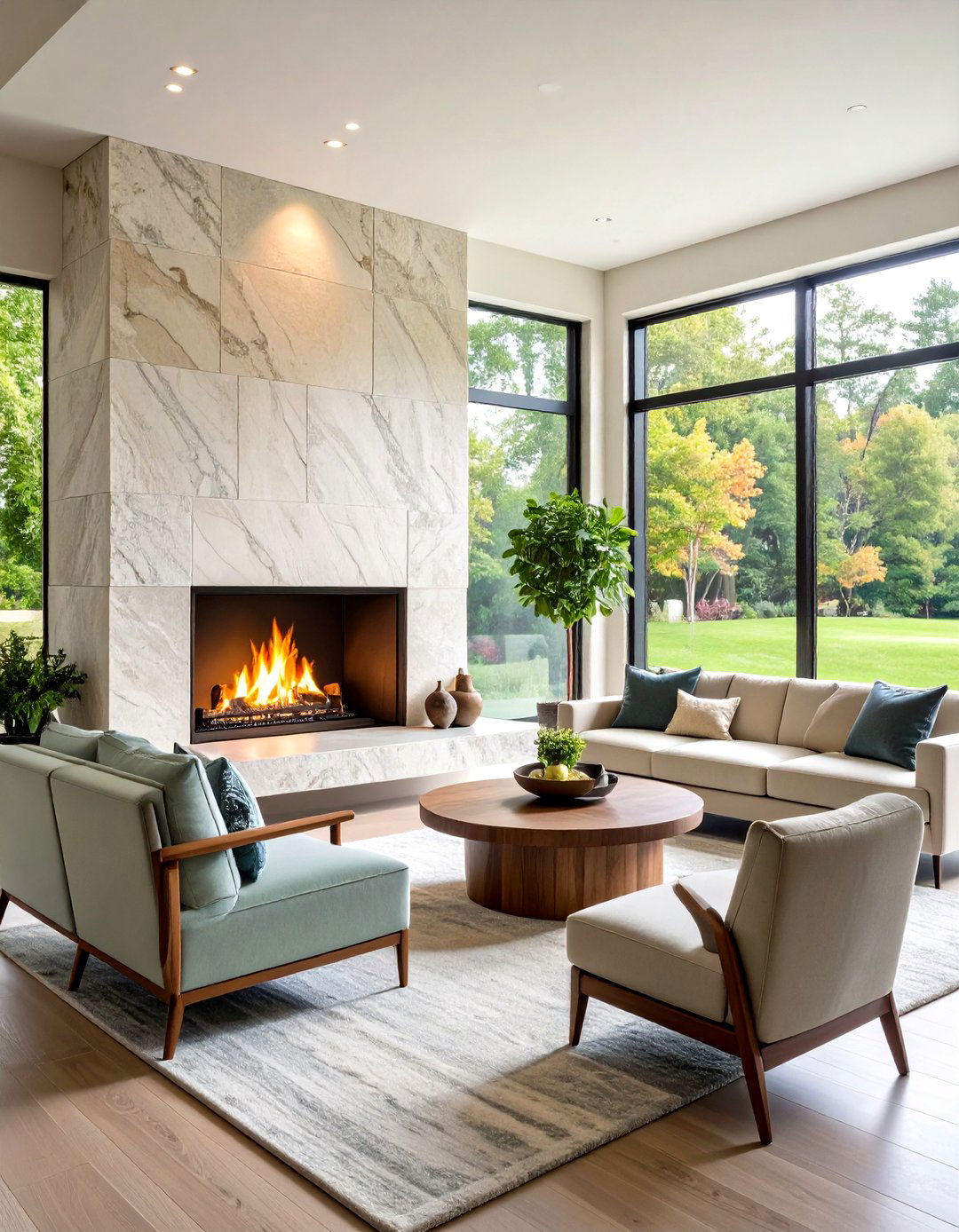
A sweeping slab of vein-cut limestone can transform a simple firebox into a seamless stone statement fireplace that reads like a single architectural column. Designers find that carrying the same stone from floor level right up to the ceiling eliminates visual breaks, making rooms appear taller and calmer. Installing the hearth flush with the finished floor lets furniture float in front without trip hazards, while hidden access panels preserve a clean face for servicing. Natural stone also retains heat and releases it slowly after the flames subside, dovetailing with 2025’s preference for fireplaces that double as passive thermal masses, for lingering comfort.
2. Double-Sided Divider Fireplace
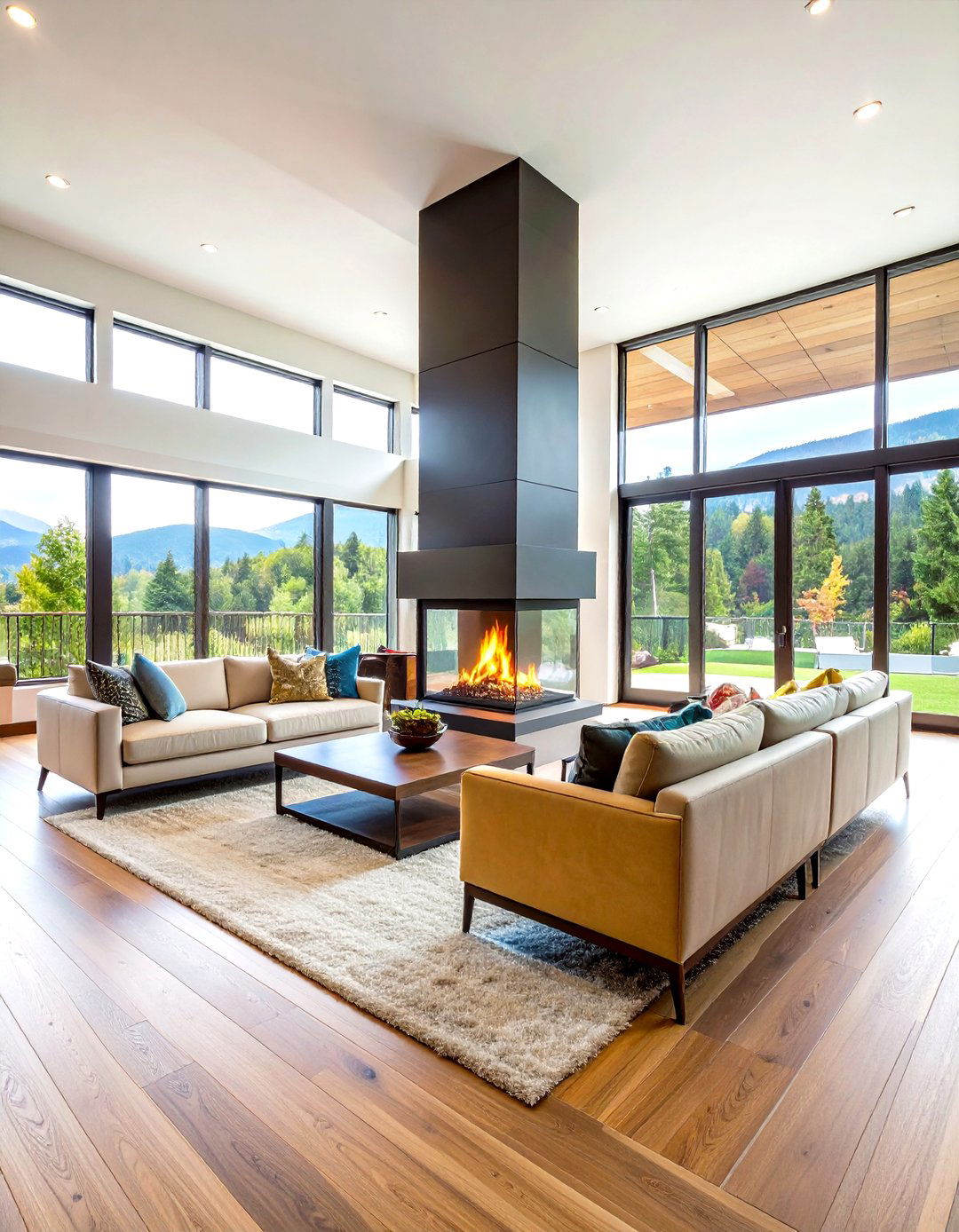
Unlike a solid partition, a double-sided floor-to-ceiling fireplace creates two cozy zones while still letting light and sight lines travel through a space. Because the flame is visible from both rooms, it acts as a shared focal point and eliminates the need for duplicate heating sources. Industry case studies note that this configuration can raise overall efficiency by distributing warmth on both sides of the wall. In open-concept plans, placing the unit midway between living and dining areas subtly defines function without adding doors or columns. Choose a sealed, direct-vent model to keep exhaust routing simple and maintain air quality in each zone.
3. Media Wall Linear Fireplace
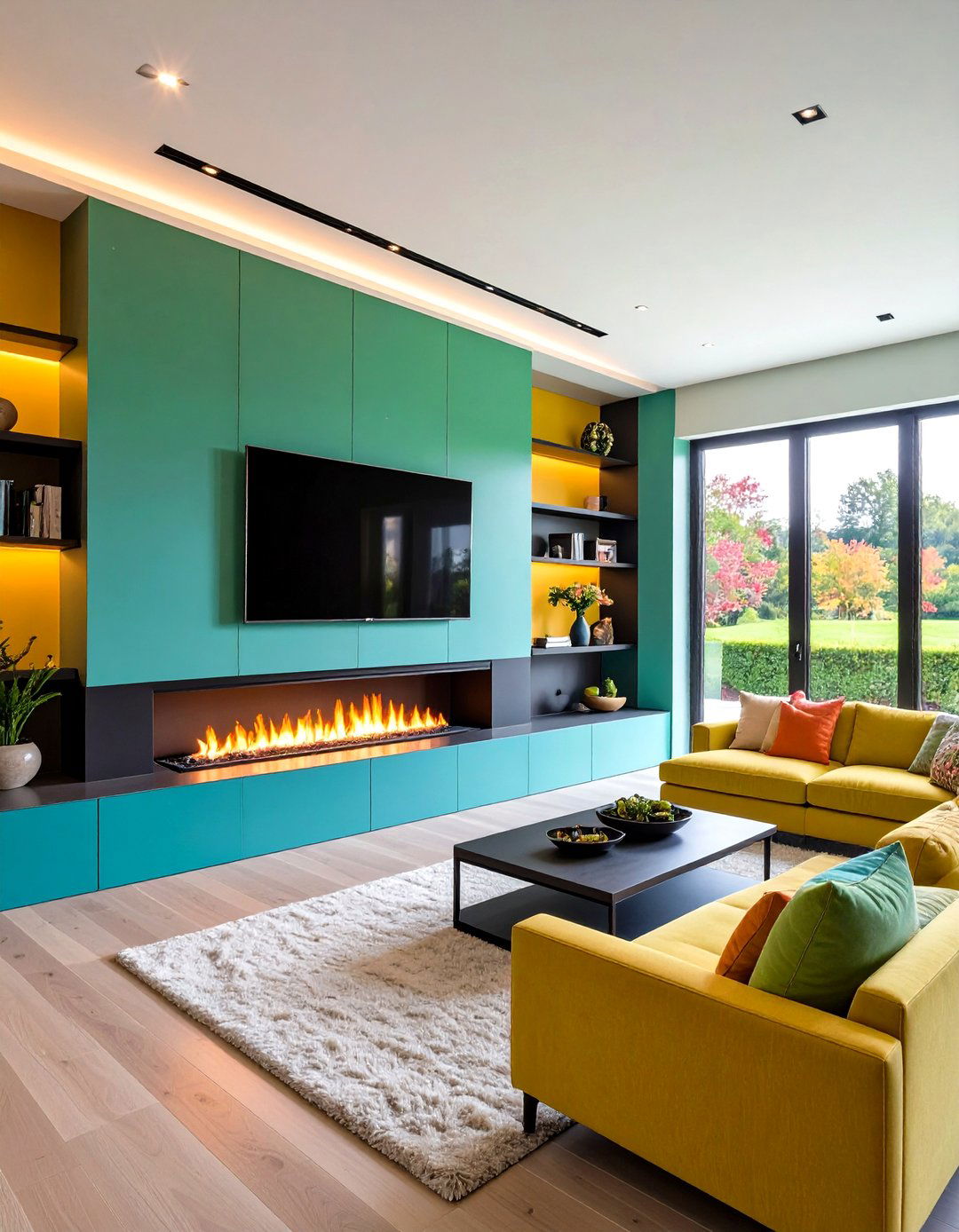
Take the clutter off your mantel by integrating a slim linear fire strip beneath the television on a full-height media wall. Because the firebox stretches horizontally rather than vertically, the wall above remains available for screens or art, letting you keep attention centered at seated eye level. Manufacturers highlight heat-management systems that shunt warmth away from electronics so you can mount a TV just inches above the flames without risking damage. Designers also appreciate that linear floor-to-ceiling fireplaces can be framed in drywall, wood slats, or recessed shelving for a perfectly flush finish that hides cables and speakers.
4. Suspended Sculpture Fireplace
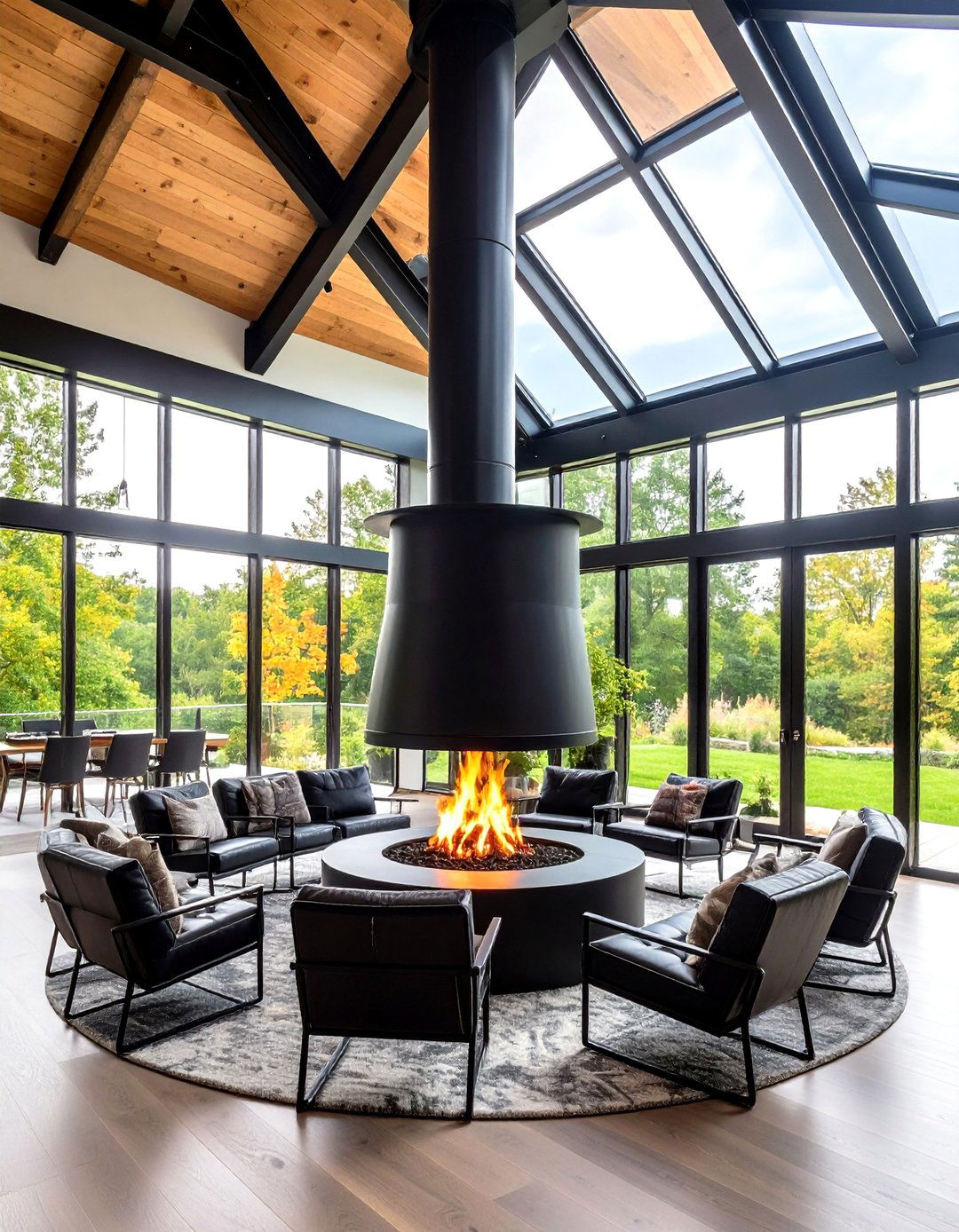
Surprisingly, a ceiling-hung fireplace can feel lighter than a traditional hearth because it frees up floor area and lets daylight flow underneath. Contemporary suspended models pivot 360 degrees, offering everyone in the room an equal view of the fire and allowing you to redirect radiant heat with a gentle push. When extended all the way to the ceiling flue, the black steel body becomes a kinetic sculpture that anchors conversation pits or loft-style living rooms. Home appraisers also note that an iconic suspended floor-to-ceiling fireplace can boost perceived property value thanks to its rarity and dramatic first impression.
5. Textured Tile Tower Fireplace
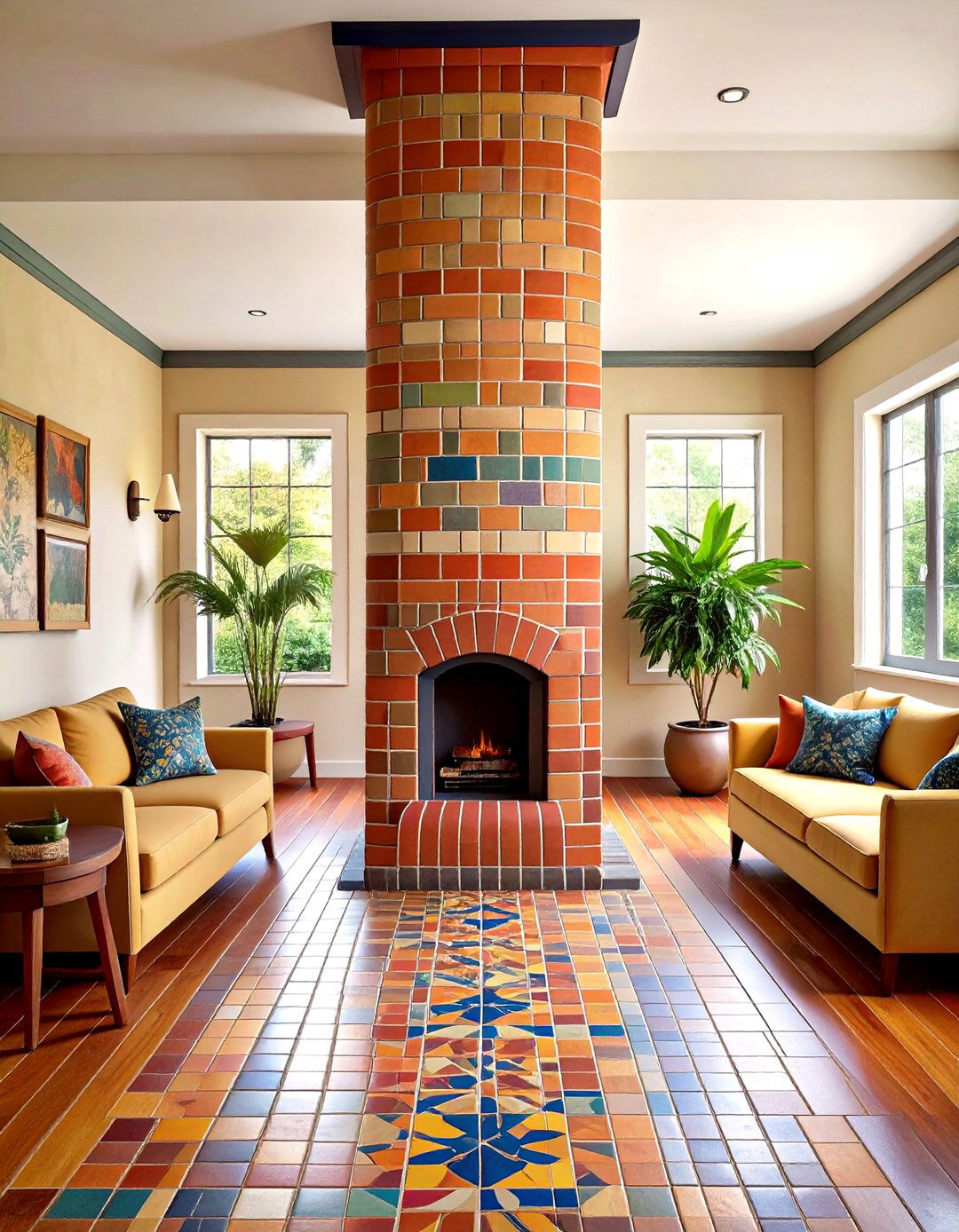
Another way to draw the eye upward is by wrapping the chimney breast in patterned tile laid all the way to the crown molding. Graphic encaustic motifs or vertically stacked thin-brick tiles add rhythm without overwhelming surrounding walls. Tile installers recommend a flexible setting mortar that tolerates the slight expansion caused by temperature swings along a floor-to-ceiling fireplace face. Design inspiration galleries illustrate how geometric tile towers instantly modernize otherwise neutral living rooms. Selecting a matte finish limits glare from the flames and keeps grout lines subtle. For extra cohesion, repeat a single accent color from the tile in throw pillows or built-ins nearby so the soaring column feels integrated rather than isolated.
6. Reclaimed Timber Rustic Fireplace
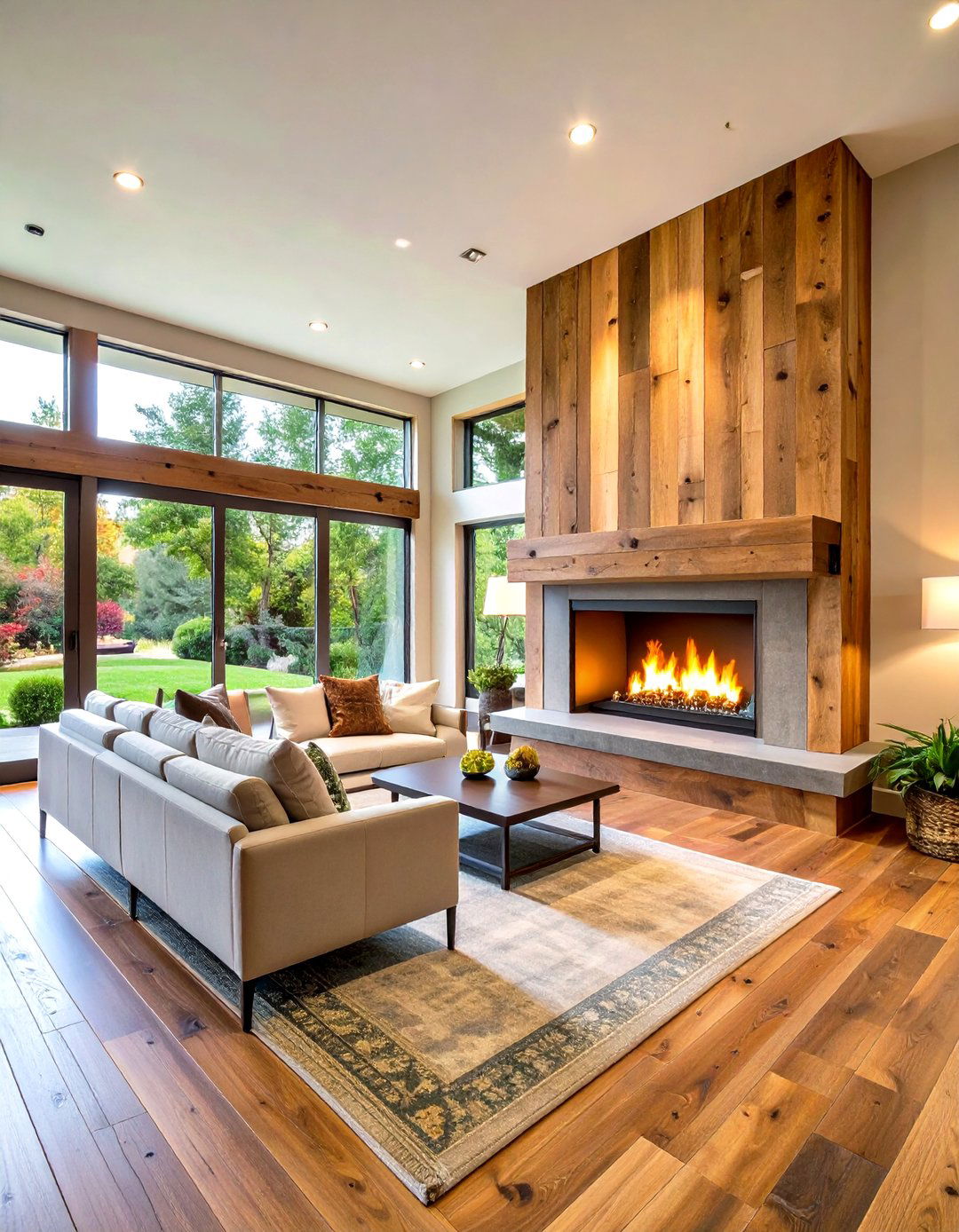
Consider a rustic-modern twist by cladding your floor-to-ceiling fireplace in reclaimed barnwood planks. The weathered boards introduce texture and historic character, yet when installed in tight vertical runs they still feel contemporary. Because aged timbers contain residual moisture, experts advise kiln-drying and sealing them before fastening to prevent future warping from fireplace heat. Pairing the wood with a sleek steel firebox keeps the look balanced rather than country. Hidden LED uplights at the ceiling edge graze the grain at night, emphasizing every knothole and saw mark for storytelling warmth without adding more décor clutter or structural weight.
7. Black Brick Drama Fireplace
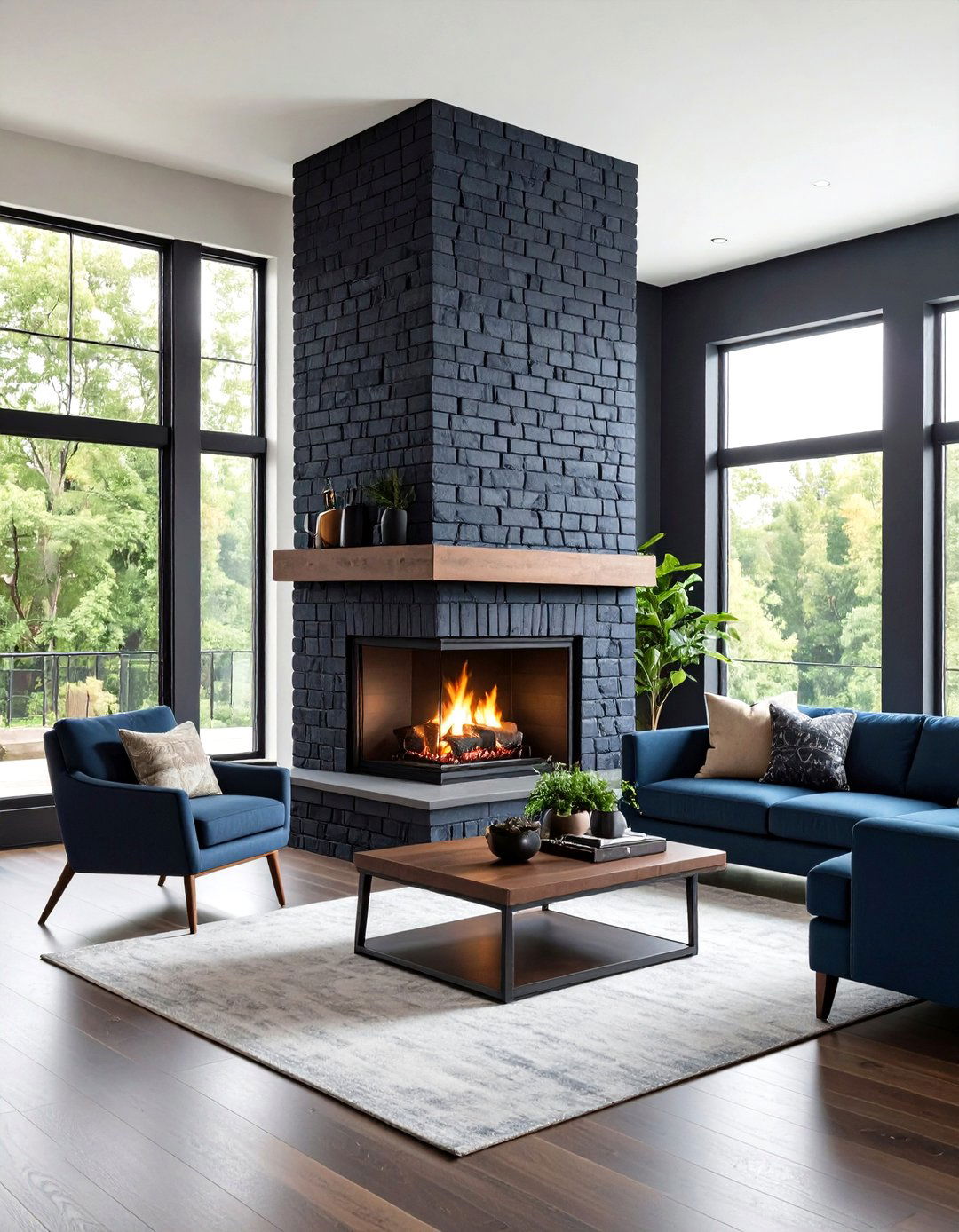
With just a bucket of high-temperature matte paint, an ordinary red-brick chimney can become a dramatic charcoal-toned tower that grounds even the brightest interiors. The moody palette absorbs light, letting flames pop like luminous artwork while highlighting subtle brick relief. Trend roundups for 2025 name black brick floor-to-ceiling fireplaces as a top choice for homeowners seeking depth without added ornamentation. To keep soot stains invisible, choose paint rated for 1 200 °F and scrub the surface before application so pigments bond properly. Brass or brushed-nickel log lighters give an elegant contrast and hint at vintage industrial heritage in an otherwise modern room.
8. Smart Gas-Controlled Fireplace
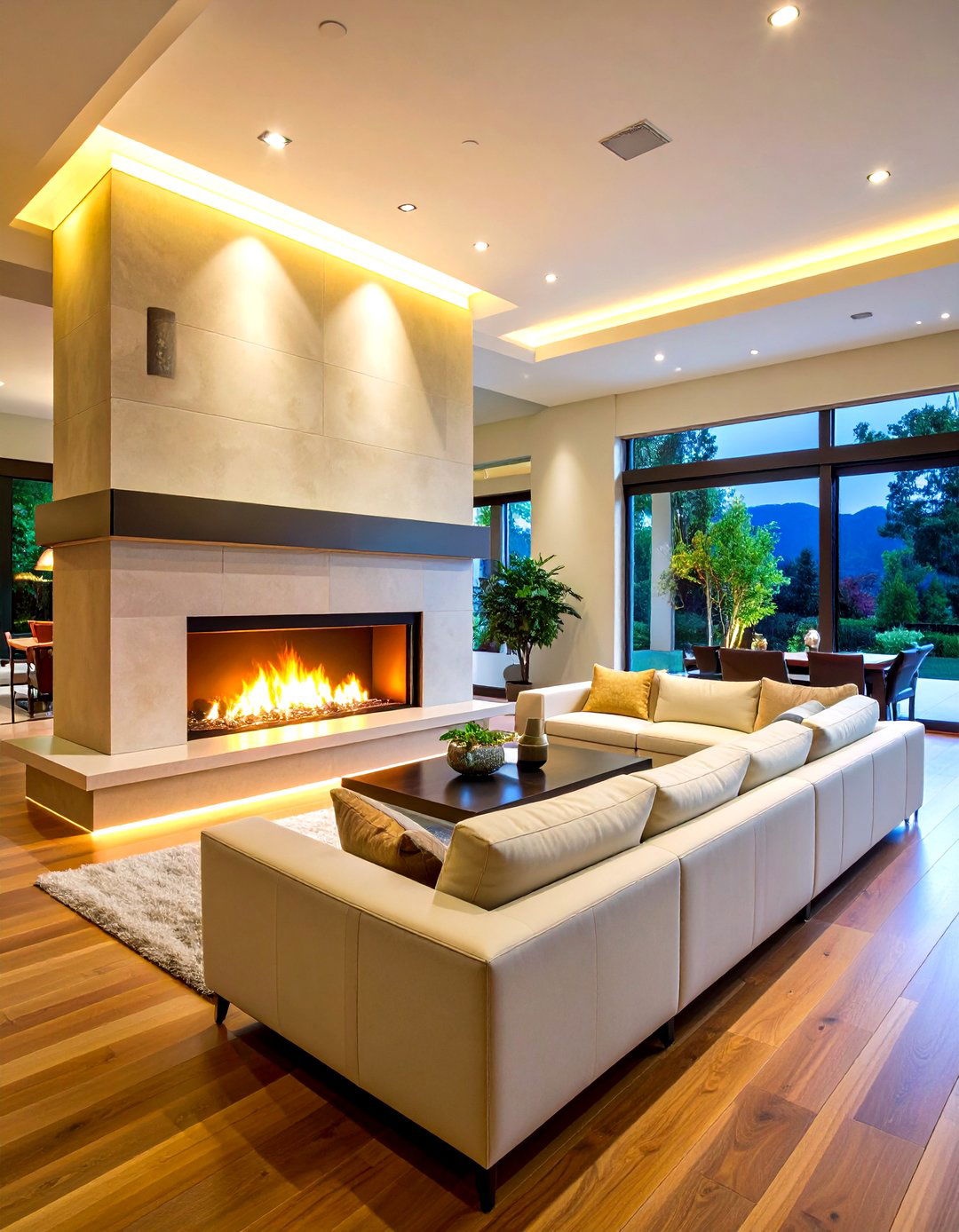
Unlike yesterday’s pilot-light units, the latest gas floor-to-ceiling fireplaces connect to mobile apps that let you schedule temperature curves, monitor CO sensors, and even dim accent lighting with a swipe. Heat-management channels redirect excess warmth into adjacent rooms or out through the roof, allowing taller surrounds finished in delicate plaster or wood veneer without scorching finishes. If your chimney path is complicated, balanced-flue technology vents combustion gases horizontally through an exterior wall, widening placement options and simplifying retrofits. Combine smart controls with a battery backup ignition so you still have heat during power outages on winter nights too.
9. Mixed-Material Mosaic Fireplace

Bringing together brushed metal reveals, rough stone, and smooth plaster on one soaring chimney stack can deliver gallery-level texture. Designers often organize materials in horizontal bands, echoing geological strata while visually breaking the column into digestible layers. A favorite recipe pairs a stainless-steel firebox surround, a mid-height ledge of stacked slate, and a top section of limewash plaster for softness. Because each finish absorbs and radiates heat differently, leave slim expansion joints between layers to prevent cracks. The result is a floor-to-ceiling fireplace that feels curated and artisanal, yet timeless enough to ride out trend cycles for decades ahead.
10. Built-In Bookcase Fireplace Wall
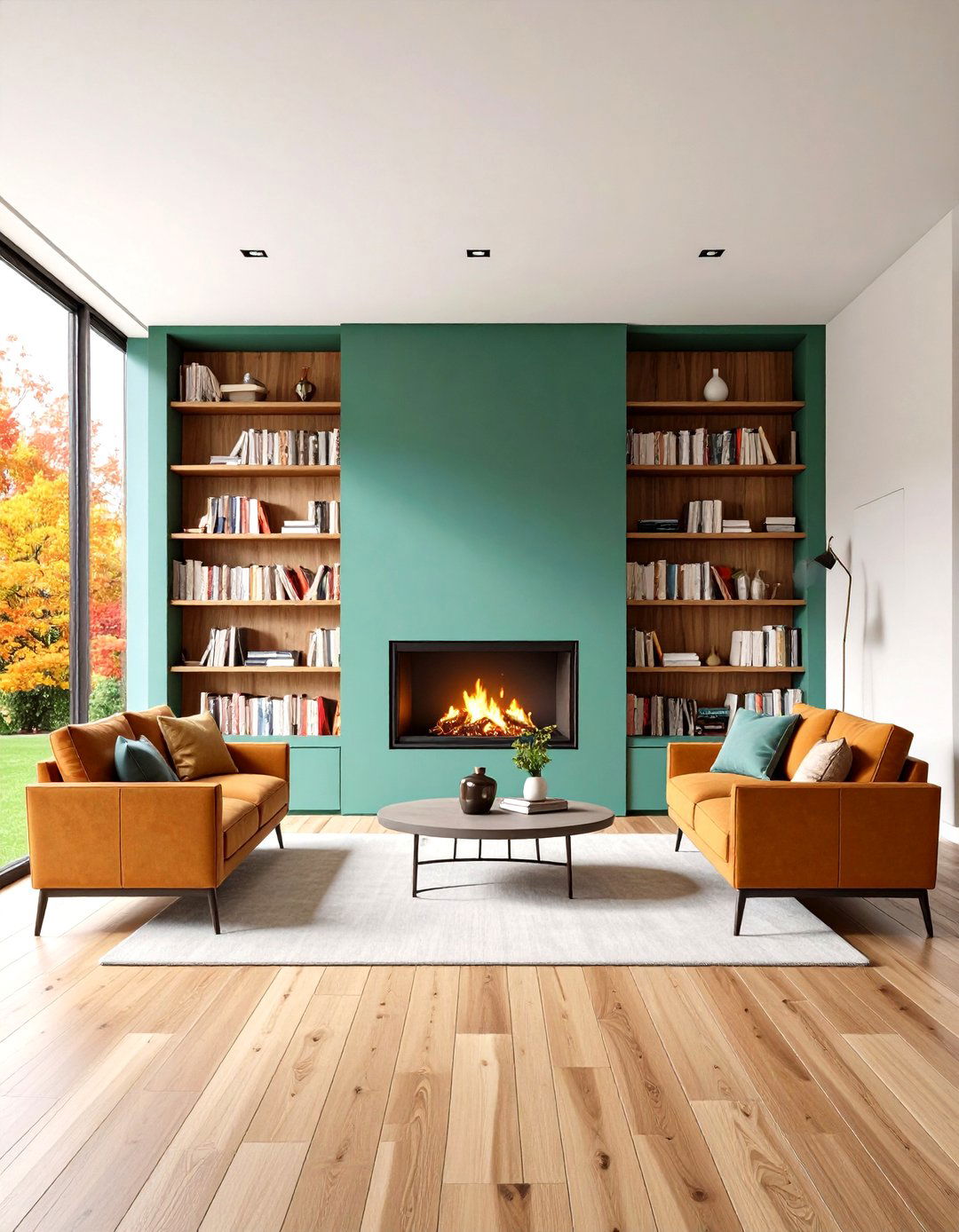
Looking to merge storage and ambiance, homeowners are extending crisp built-in bookcases on either side of a tall fireplace, then wrapping shelves with the same surround material to create a unified wall. This strategy disguises the bulk of a chimney chase, provides display space, and frames the flames like a work of art. Pro installers caution that combustible shelving should end at least six inches from the firebox opening or be constructed from fire-rated MDF to meet code. Painting the cabinetry the same tone as the fireplace cladding keeps the vertical mass from feeling top-heavy in rooms with standard ceiling heights.
11. Concrete Column Fireplace
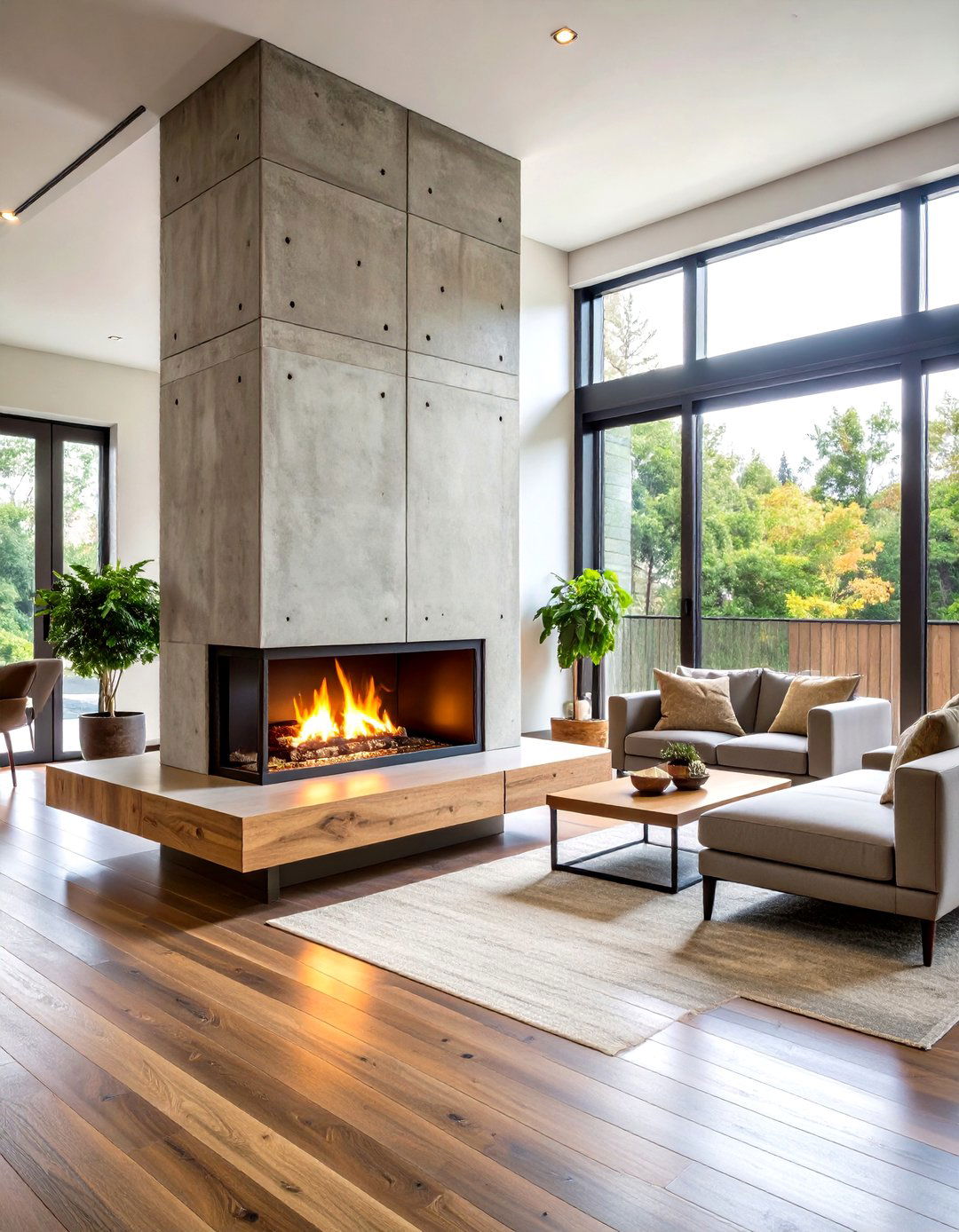
Despite concrete’s industrial reputation, a finely troweled floor-to-ceiling fireplace column can feel serene and sophisticated. Because concrete absorbs and slowly releases heat, it moderates temperature spikes and is ideal for high-efficiency insert stoves. When cast in place, steel rebar anchors the chimney so no bulky framing interrupts the monolithic look. Case studies of board-formed concrete fireplaces show they withstand daily use while retaining crisp edges and subtle wood-grain impressions that add organic warmth. Seal the surface with a breathable matte penetrating sealer to prevent soot stains and allow moisture vapor to escape even during humid monsoon seasons as well outside.
12. Minimalist Plaster Canvas Fireplace
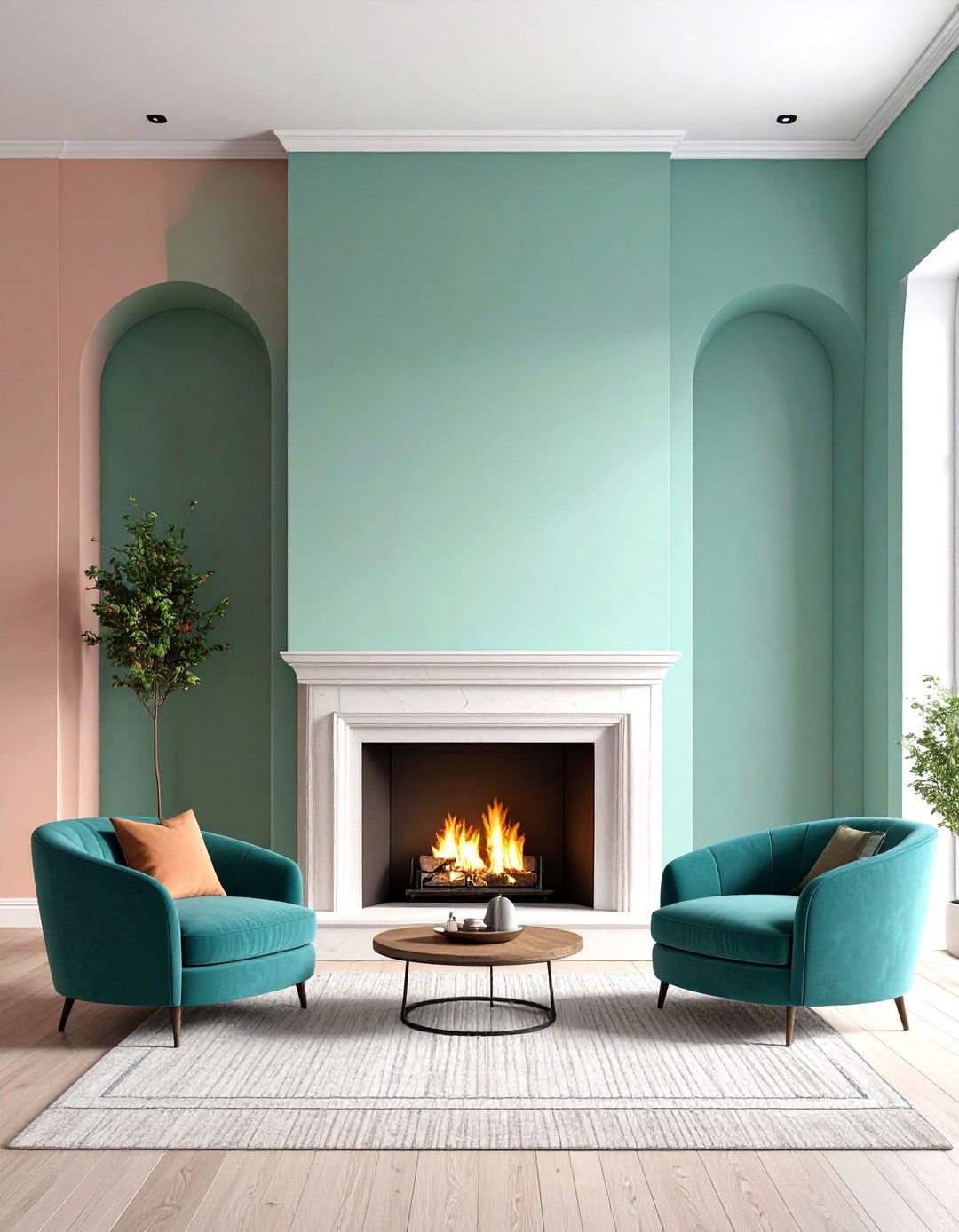
By smoothing a thin coat of lime or gypsum plaster over the entire chimney breast, you create a minimalist canvas where the flame itself becomes the artwork. Designers favor slightly rounded outside corners so light grazes softly rather than casting harsh lines. If you tint the plaster with the same pigment used on adjoining walls, the fireplace disappears when unlit and reappears in glowing relief after ignition, a trick noted in minimalist living-room transformations. Because plaster is porous, specify a non-yellowing high-temperature primer beneath to avoid discoloration and recalibrate humidity levels for at least 48 hours before the first fire.
13. Two-Story Atrium Fireplace
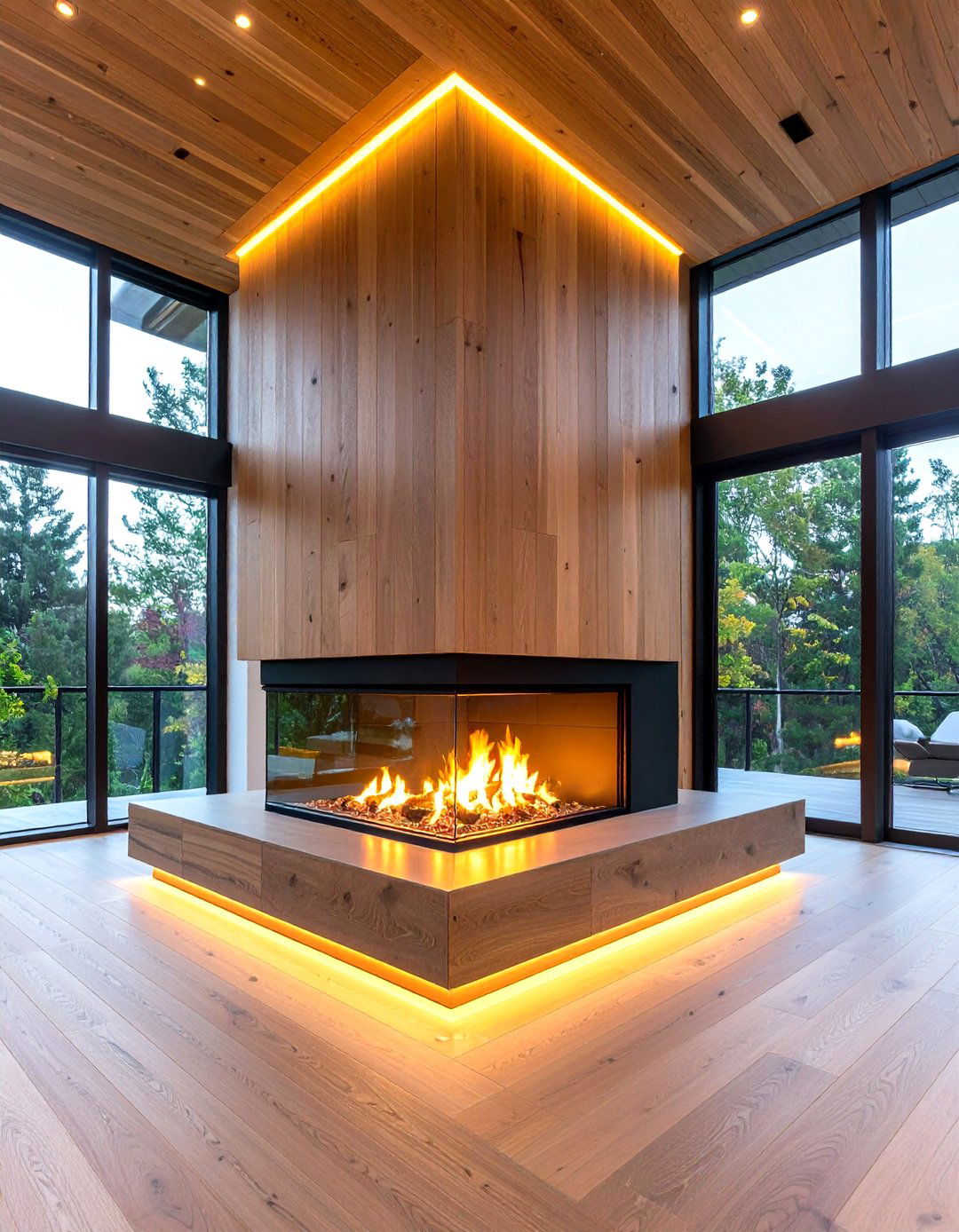
A two-story floor-to-ceiling fireplace in a double-height atrium lives up to its architectural setting, pulling the gaze toward mezzanines and upper walkways. Real-life renovations show that removing load-bearing columns and extending the fire surround in warm oak or stone dramatically brightens central living spaces by reflecting light from clerestory windows. Engineers recommend adding steel-reinforced lintels above the firebox so the weight of the extended chimney stack transfers to side walls, preserving open sight lines. At night, concealed strip LEDs frame the outline, turning the fireplace into a vertical lantern that can be admired from multiple levels within large foyers.
14. Inside-Out Connection Fireplace
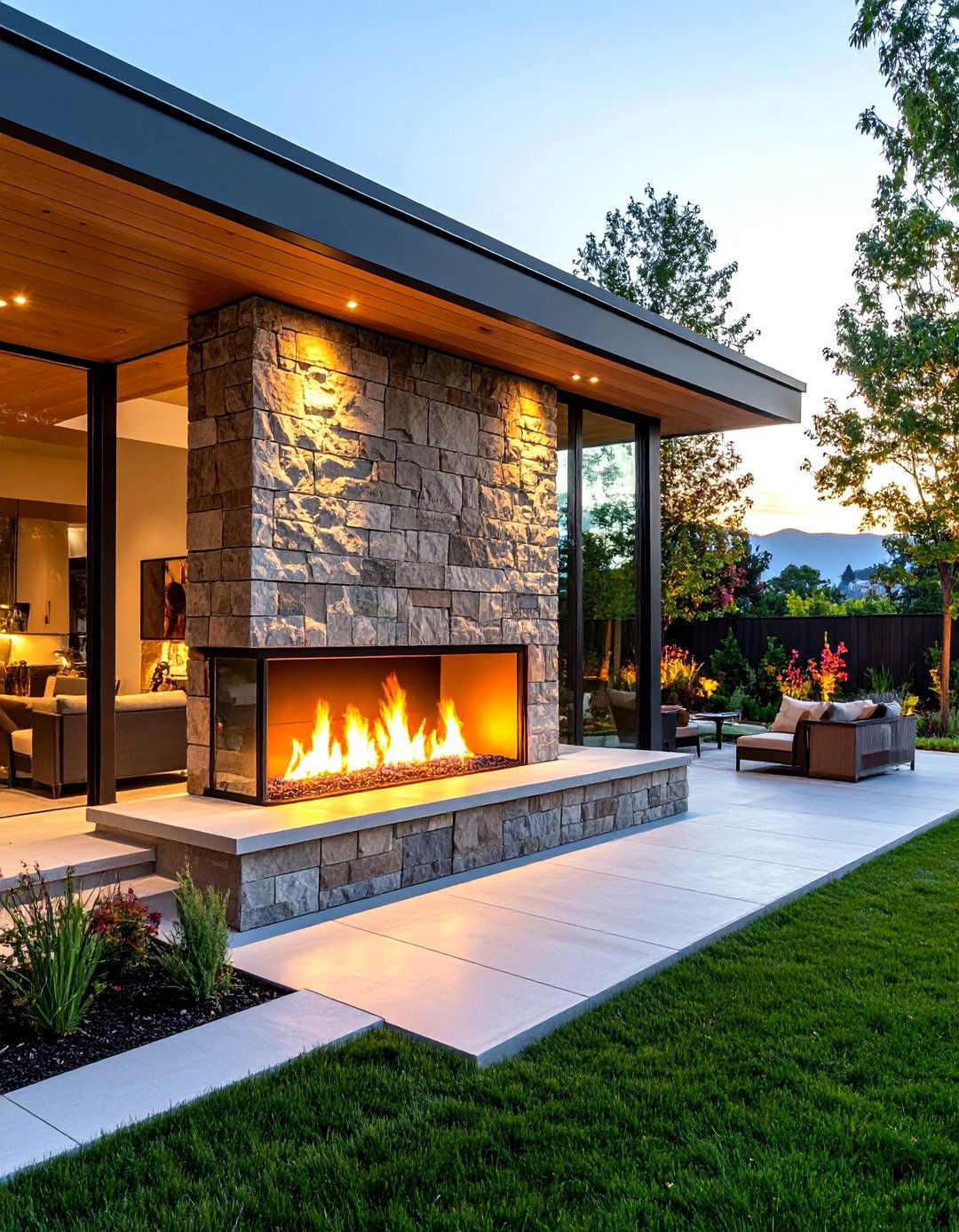
Unlike seasonal patio heaters, a see-through floor-to-ceiling fireplace that straddles an exterior wall delivers ambiance inside and out all year. Builders frame the firebox with weather-sealed steel on the outdoor side and moisture-resistant board indoors, then cap both with the same stone or tile so the line of sight remains uninterrupted. This configuration encourages sliding doors to stay open longer by equalizing temperatures across the threshold, a benefit cited in open-air living research. Select a glass-fronted direct-vent unit rated for exterior exposure, and ensure the chimney terminates above the roofline to prevent wind gusts from back-drafting smoke during storms.
15. Eco-Friendly Electric Fireplace

For apartments or high-rise condos where gas lines and chimneys are off-limits, today’s electric floor-to-ceiling fireplaces simulate flame with LED projection while adding supplemental heat through quiet fans. Because they produce no combustion gases, they can be positioned against any properly wired wall and even relocated during a remodel. Guides note that graphic tile surrounds and dark shiplap accent walls help electric units look built-in rather than portable. Energy-use calculators show many models cost less to run than a single space heater but still deliver instant ambiance at the touch of a remote on chilly city winter evenings today.
16. Classic Red Brick Revival Fireplace

Although painted surfaces dominate modern renovations, leaving classic red brick exposed on a floor-to-ceiling fireplace can anchor a room with authenticity. Restoration specialists advise repointing loose mortar and sealing the façade with a breathable siloxane treatment that resists soot but lets moisture escape. Extending the brickwork to the ceiling crown visually lengthens the wall and allows you to add a reclaimed-timber mantel at any height. Highlight the texture by aiming adjustable spotlights upward so shadows dance across uneven joints, giving the centuries-old material a fresh, gallery-like presence that feels both time-honored and decisively current for homeowners today.
17. Full-Height Glass-Front Fireplace

To merge contemporary minimalism with safety, many high-end builders choose a sealed glass-front firebox that runs from the hearth slab straight to the ceiling bulkhead. The transparent face offers an uninterrupted view of dancing flames but also locks in combustion gases, improving indoor air quality. Advanced low-iron glass stays clear even at high temperatures and can be specified with anti-reflective coatings to reduce mirror-like glare in bright rooms. Pair the glass with flush drywall returns instead of a protruding mantel for a barely-there frame, letting the linear blaze float like a hologram against the wall in modern lofts everywhere.
18. Cozy Corner Vertical Fireplace
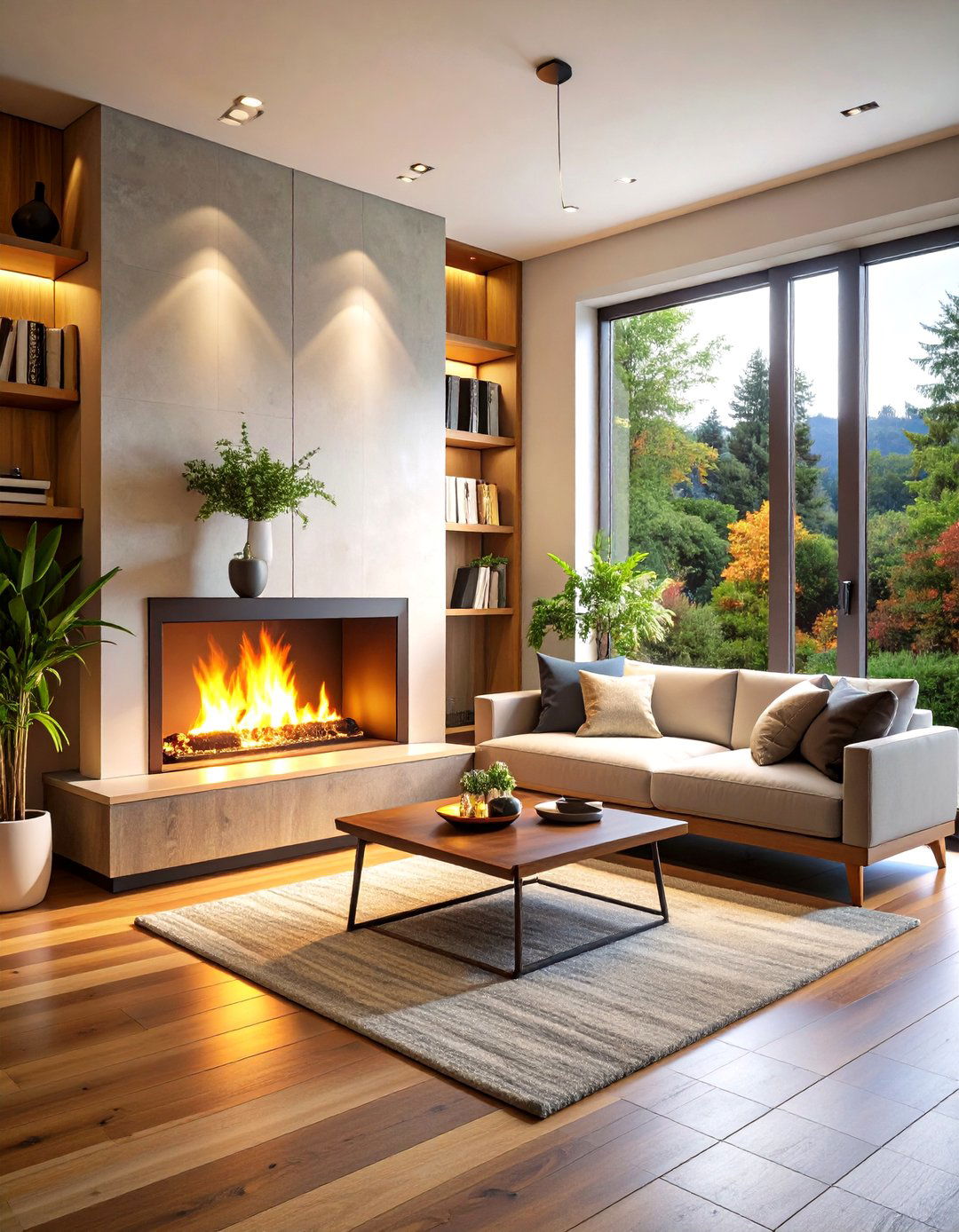
One inventive way to maximize small footprints is to nestle a narrow, vertically oriented fireplace into a corner and run the surround diagonally upward, where it visually links adjacent walls. Because corner installations expose two sides to drafts, select an insert with adjustable air intakes so flame stability remains strong even on windy days. Mirroring the diagonal line with a wraparound bench turns an awkward corner into the most coveted reading nook. Paint the meeting ceiling planes a slightly lighter tint than the fireplace cladding to bounce more light and keep the intimate zone from feeling cramped for guests.
19. Mantel-Free Sculptural Fireplace
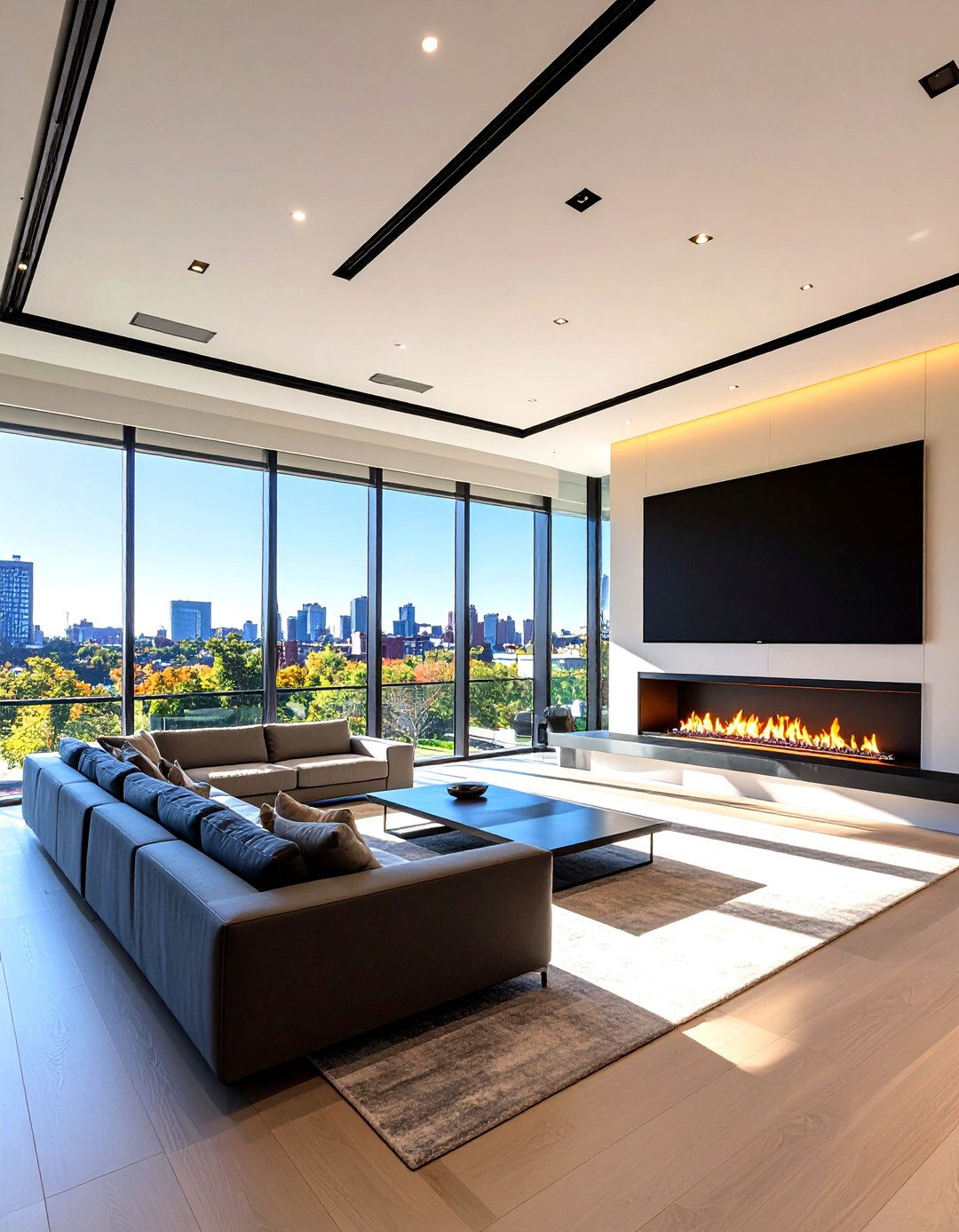
Removing the traditional mantel altogether allows a floor-to-ceiling fireplace to read as pure sculpture, especially when the firebox is recessed flush with the wall. Designers note that trimming the opening with pencil-thin metal reveals yields a shadow gap that makes the chimney look as though it is floating in front of the wall plane. Without a ledge to collect décor clutter, attention stays on flame movement and material. To avoid TV placement issues, mount a micro-projector across the room that beams content onto a retractable screen, keeping the chimney face pristine and gallery-like for parties and quiet nights alike.
20. Safety-First Venting-Optimized Fireplace
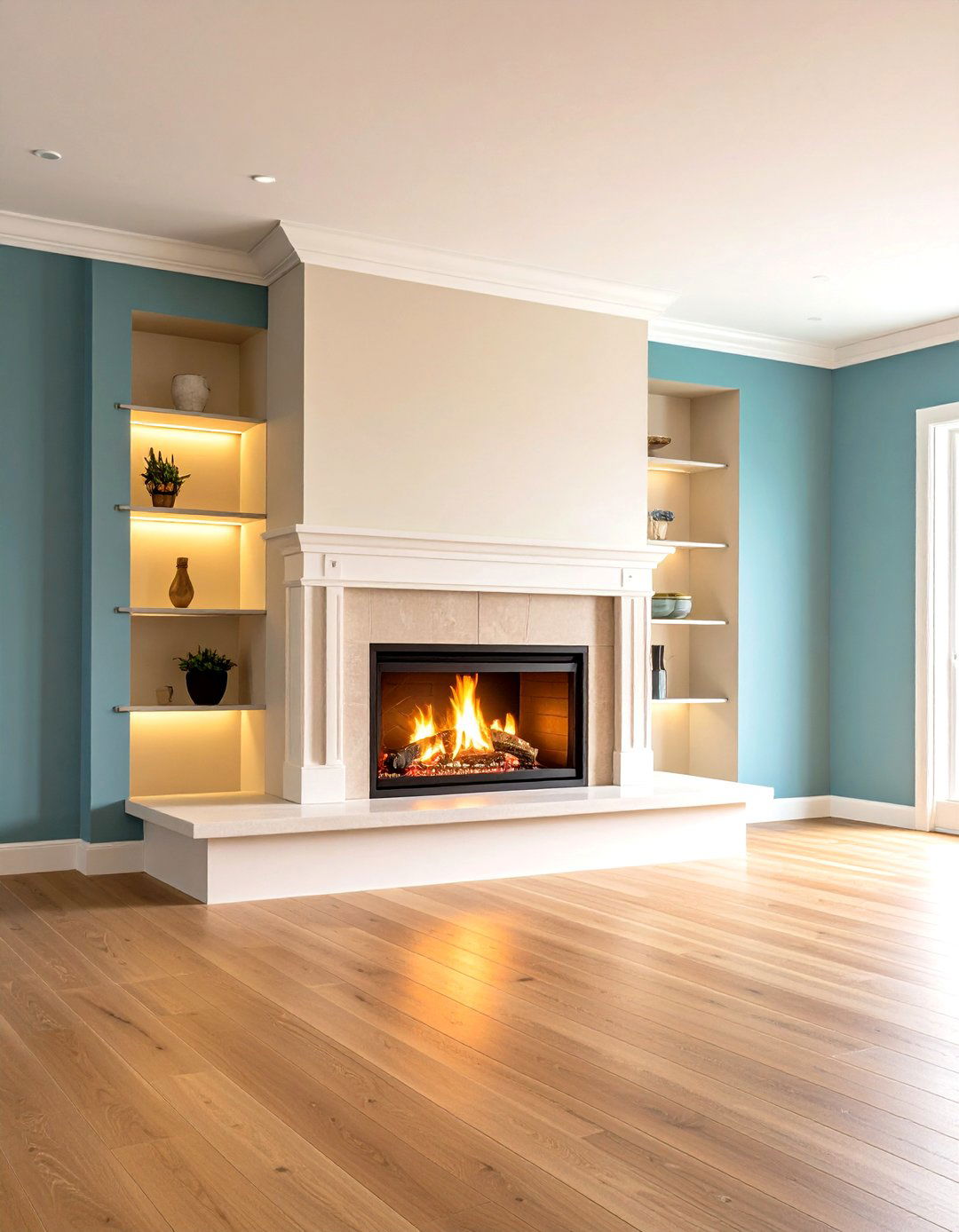
Certainly, the most beautiful floor-to-ceiling fireplace still must breathe properly. Venting guides stress selecting the exhaust path before finalizing cladding so elbows, terminations, and clearances dictate rather than disrupt your architectural intent. Gas units can route horizontally through a balanced flue, while wood models typically require a vertical chase that rises unbroken to the roof ridge. Your installer should calculate air-to-fuel ratios and place carbon-monoxide detectors on each level of the home as recommended by hearth safety experts. Planning venting early prevents costly downdraft issues and keeps the towering fireplace both stunning and safe for decades to come.
Conclusion:
From sleek glass ribbons to rustic brick towers, a floor-to-ceiling fireplace invites the eye, gathers conversation, and quietly stabilizes indoor climate. The ideas above reveal how scale, materials, venting, and smart controls combine to turn a simple heat source into a sculptural centerpiece tailored to any footprint or aesthetic. Whether you lean toward reclaimed timber warmth, minimalist plaster calm, or app-enabled gas precision, begin by mapping structure and safety, then let texture and lighting do the storytelling. Once flames leap from floor to rafters, you’ll discover that the tallest wall in your home has become its warmest welcome each night.


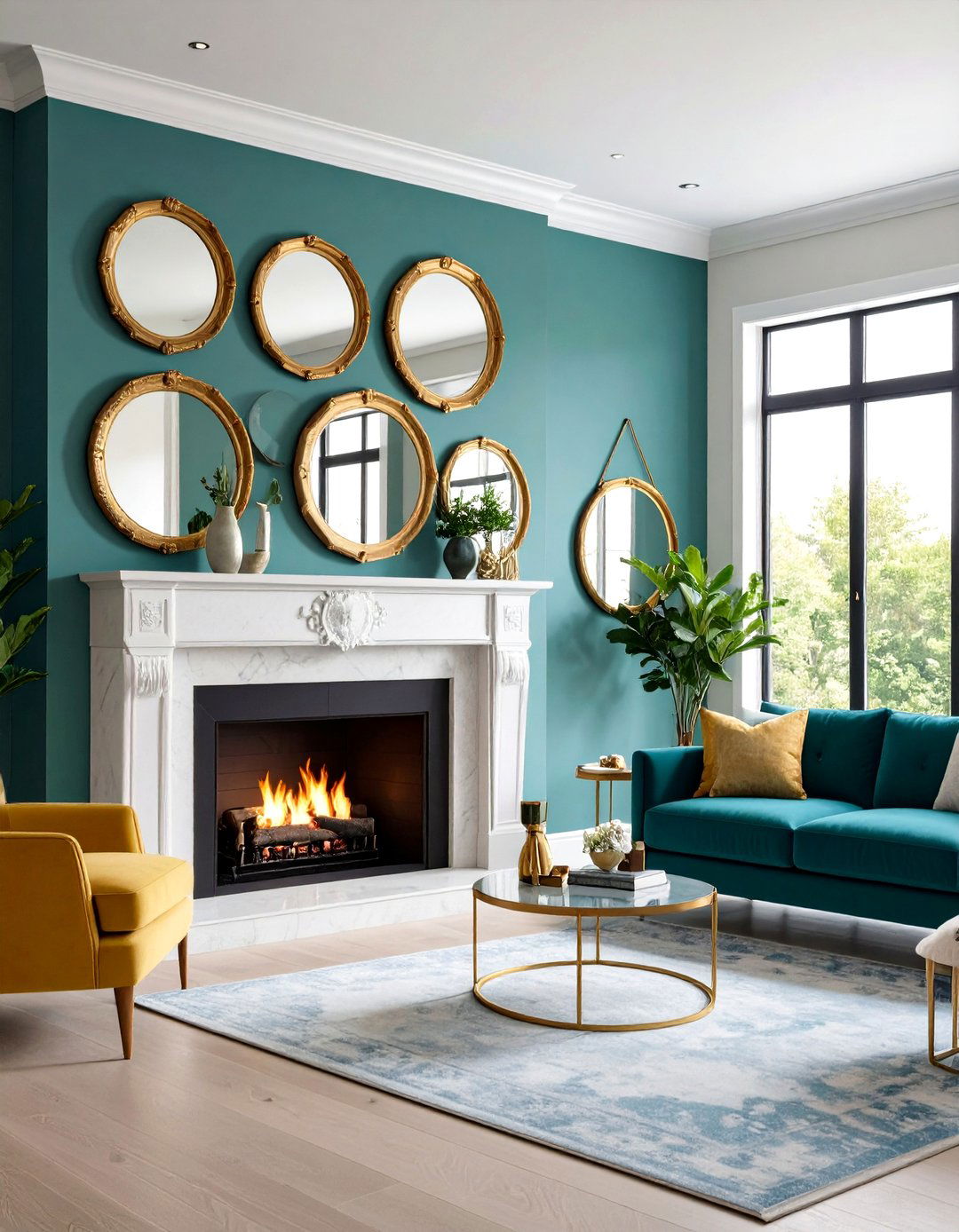
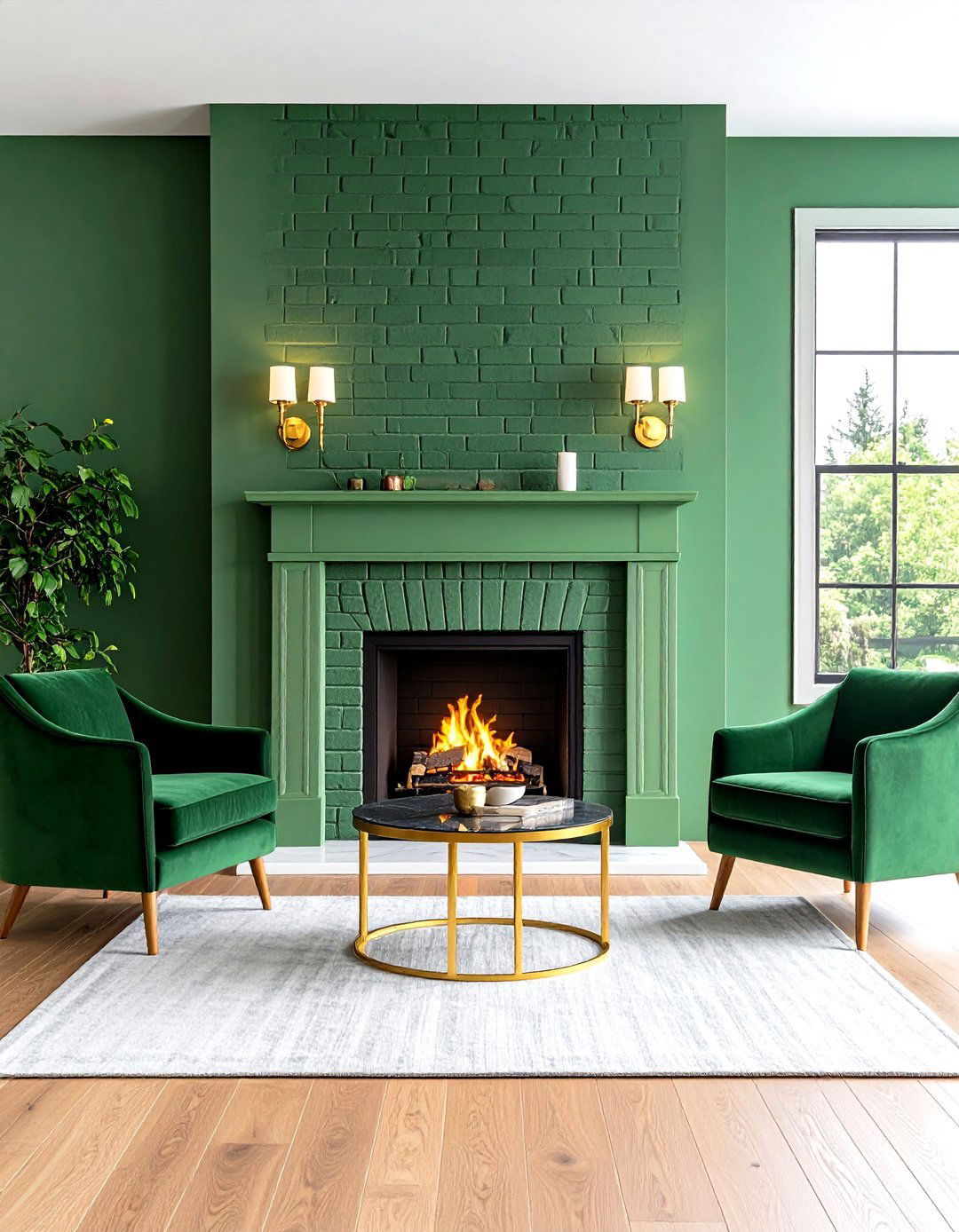
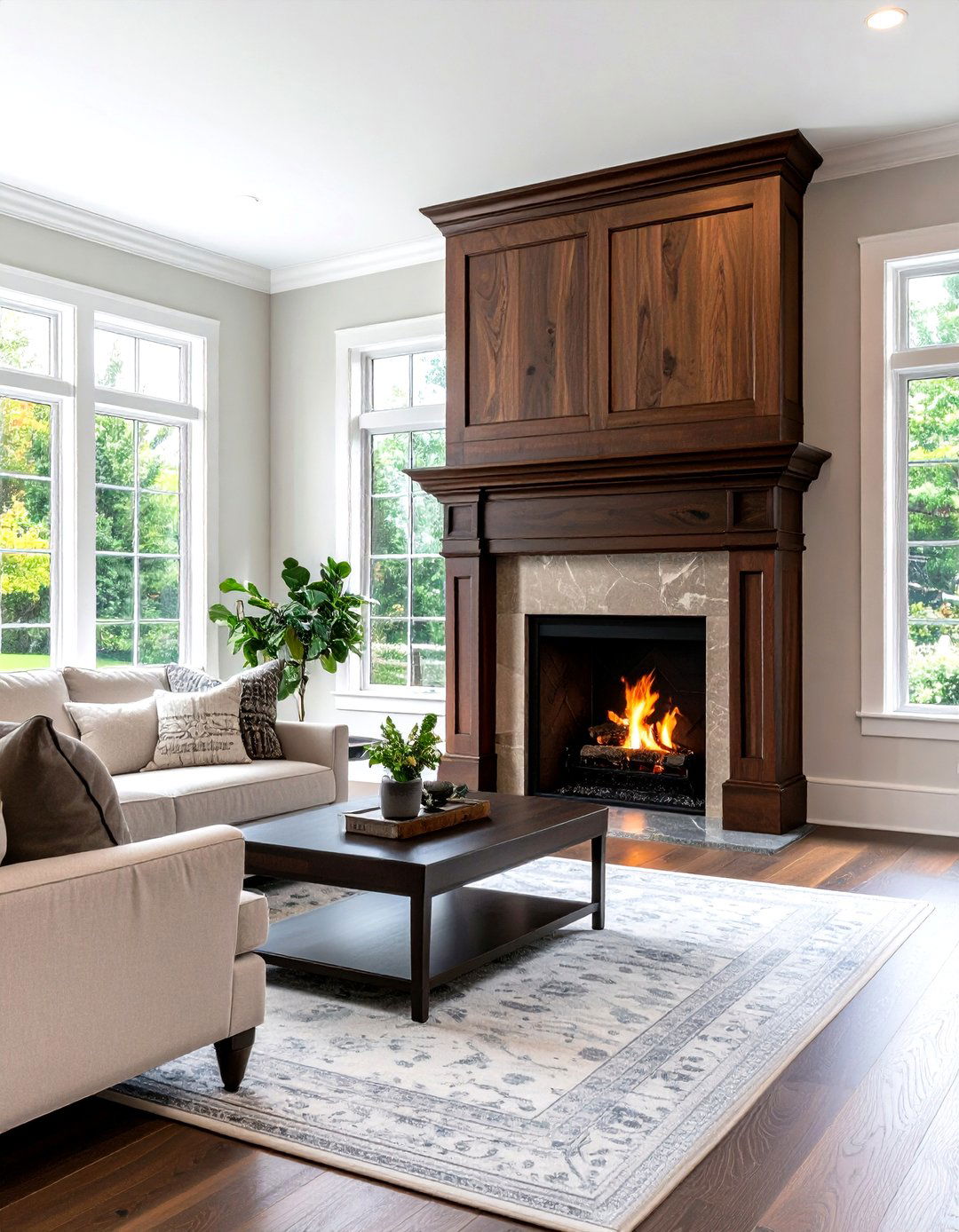
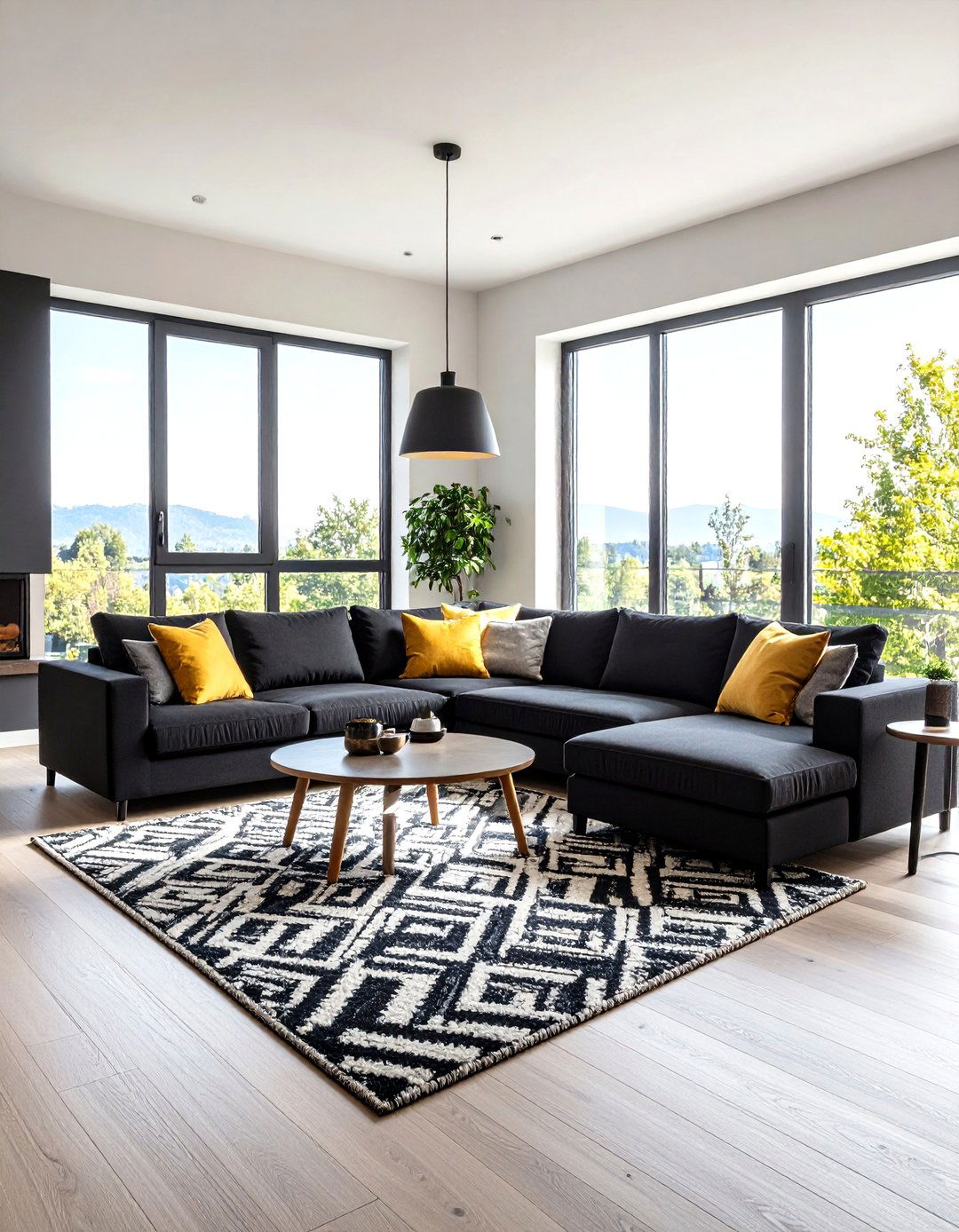
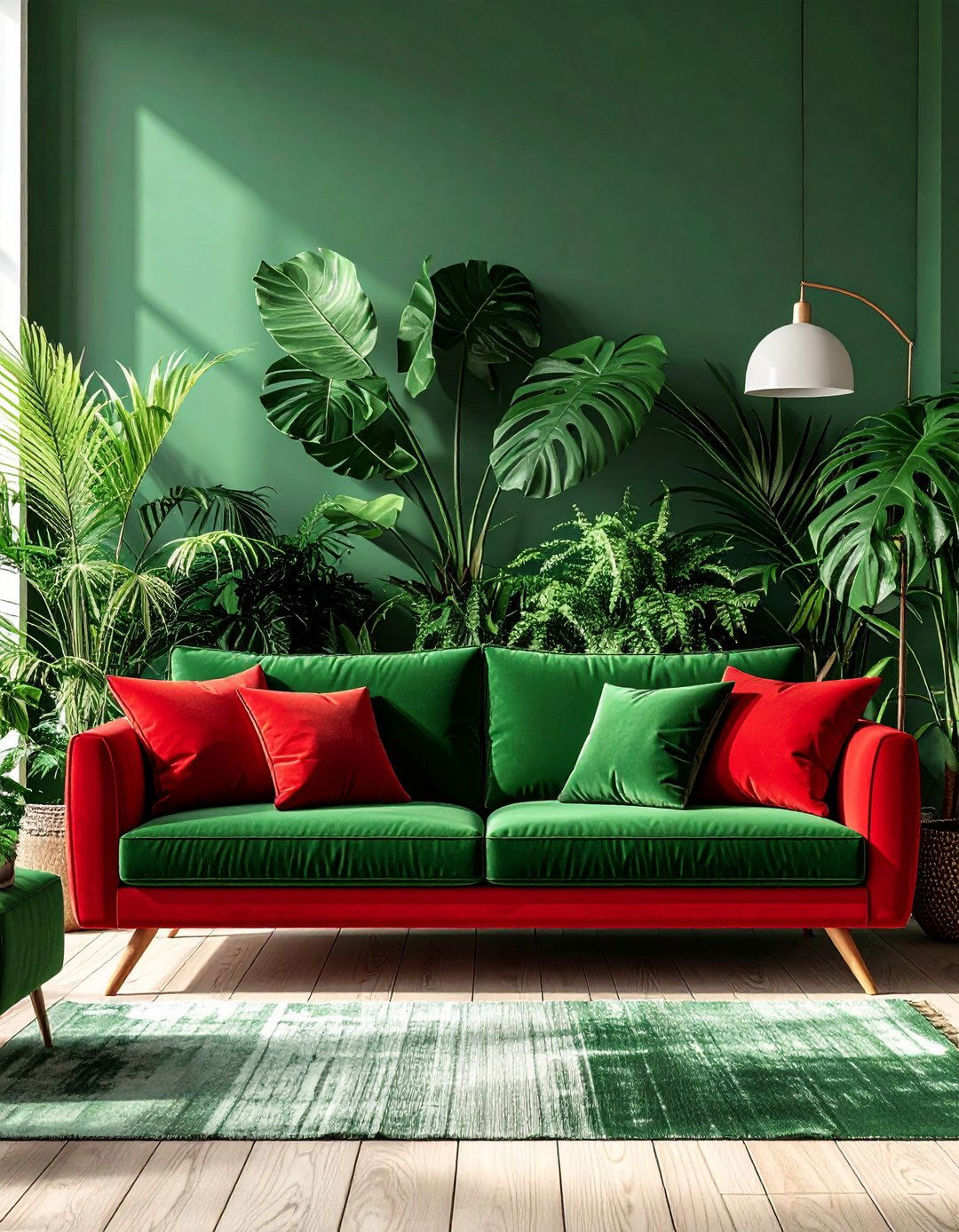
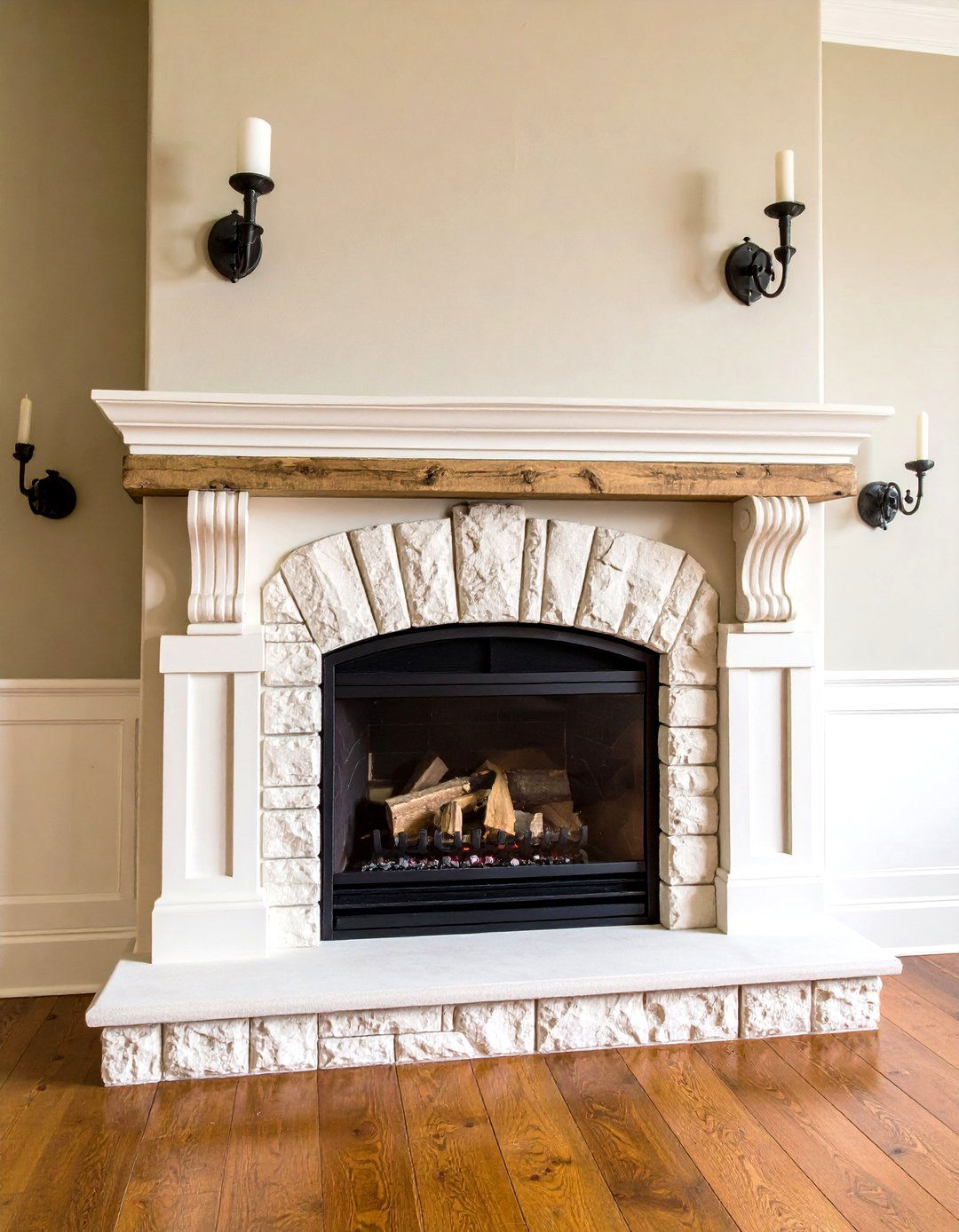
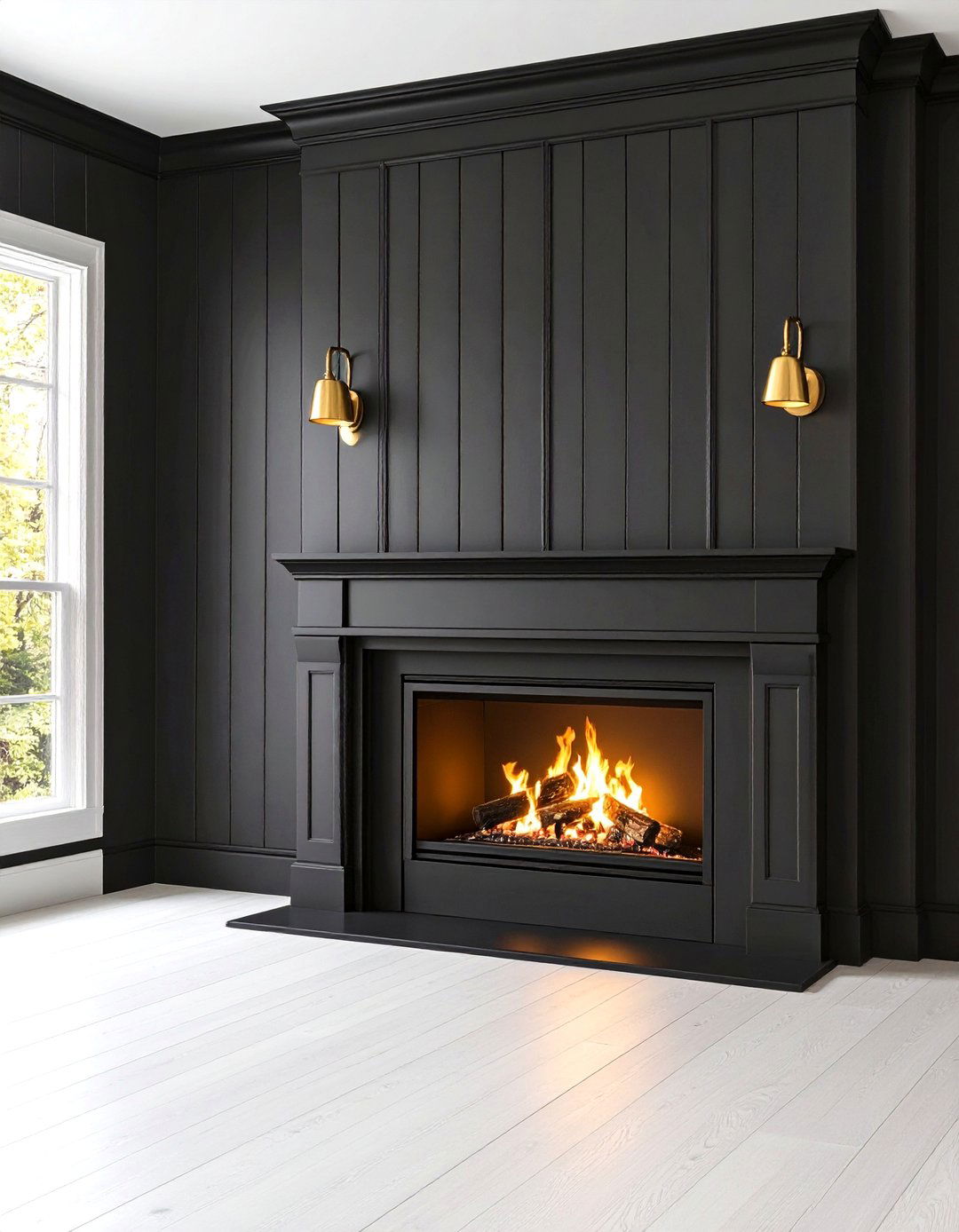
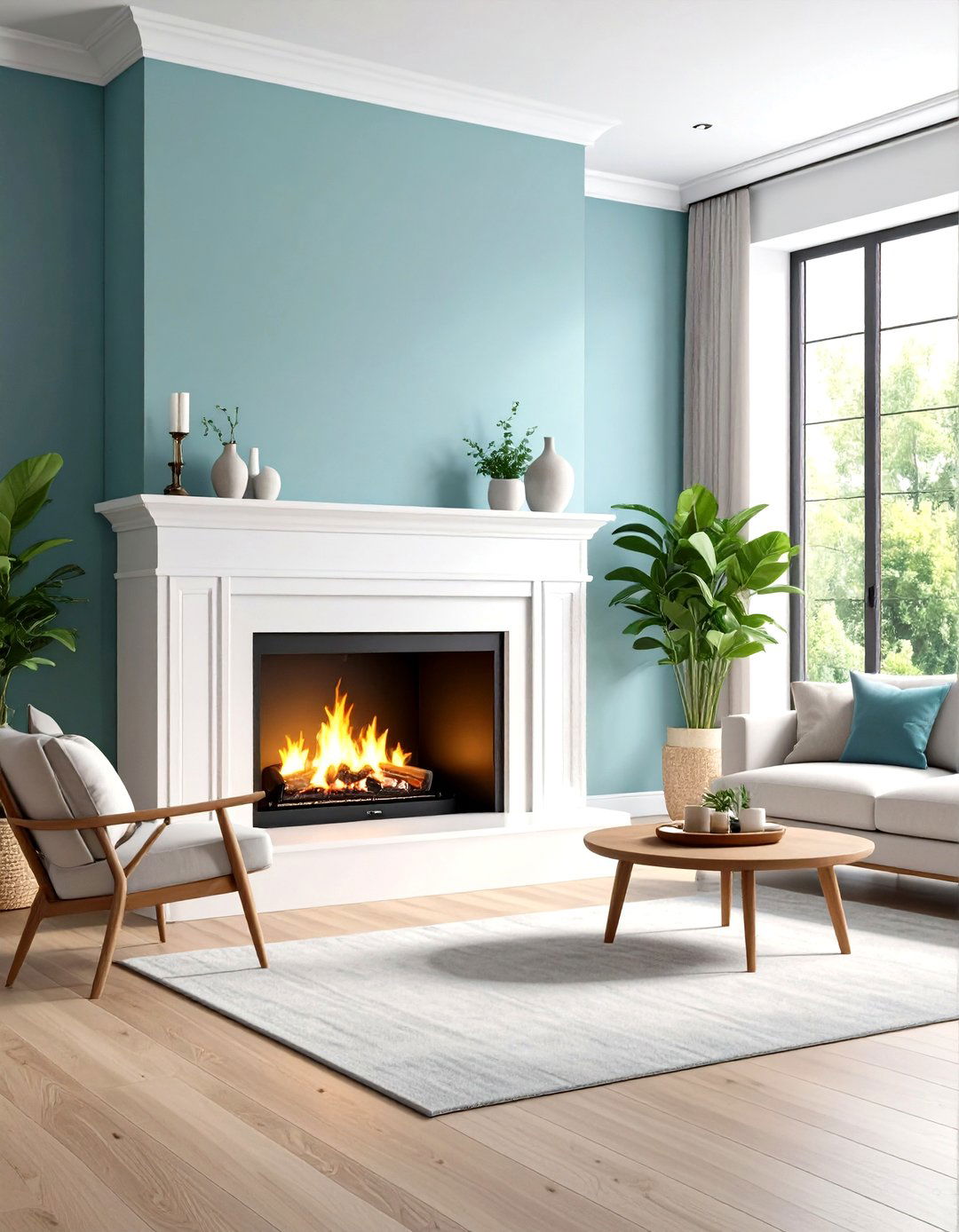
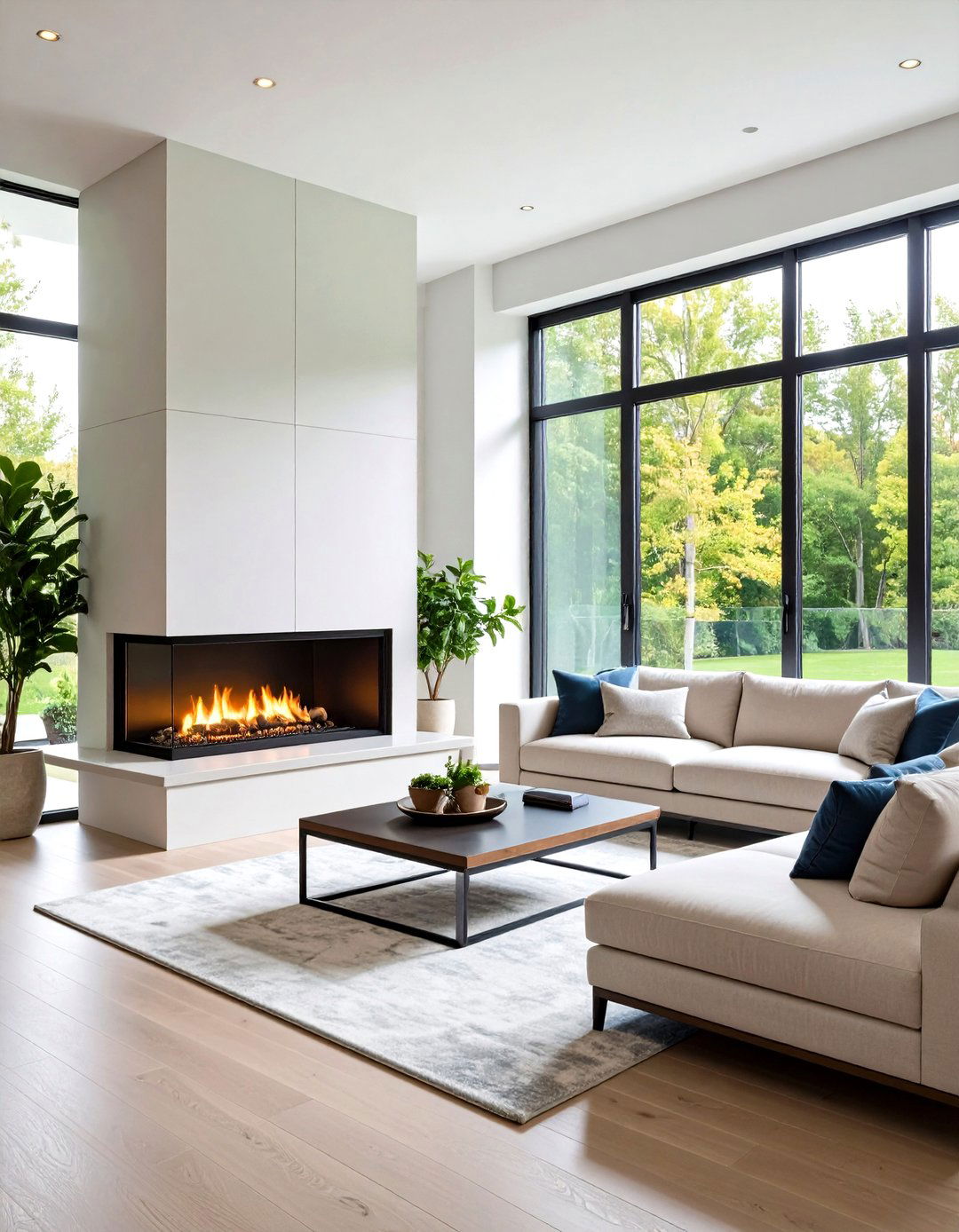
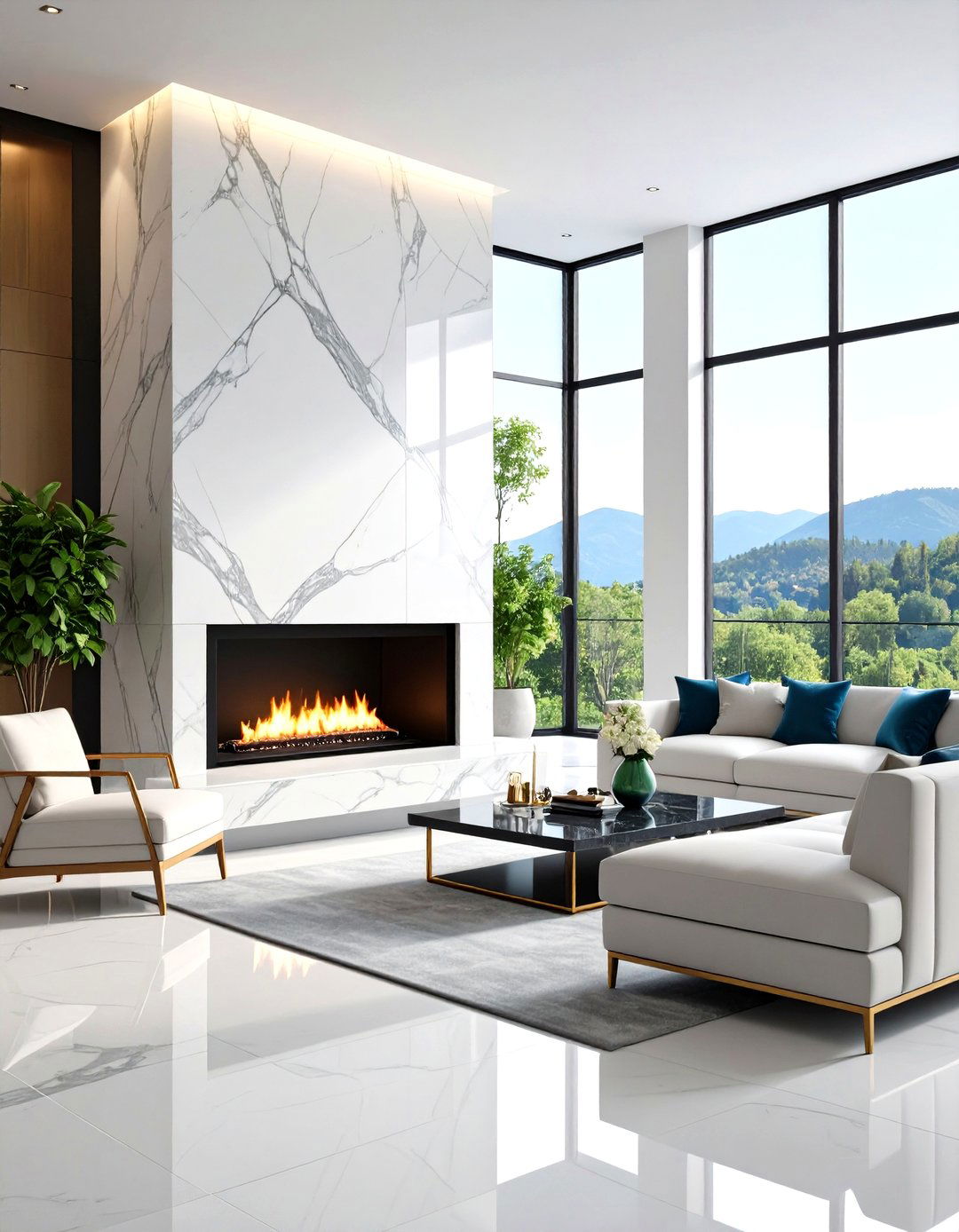
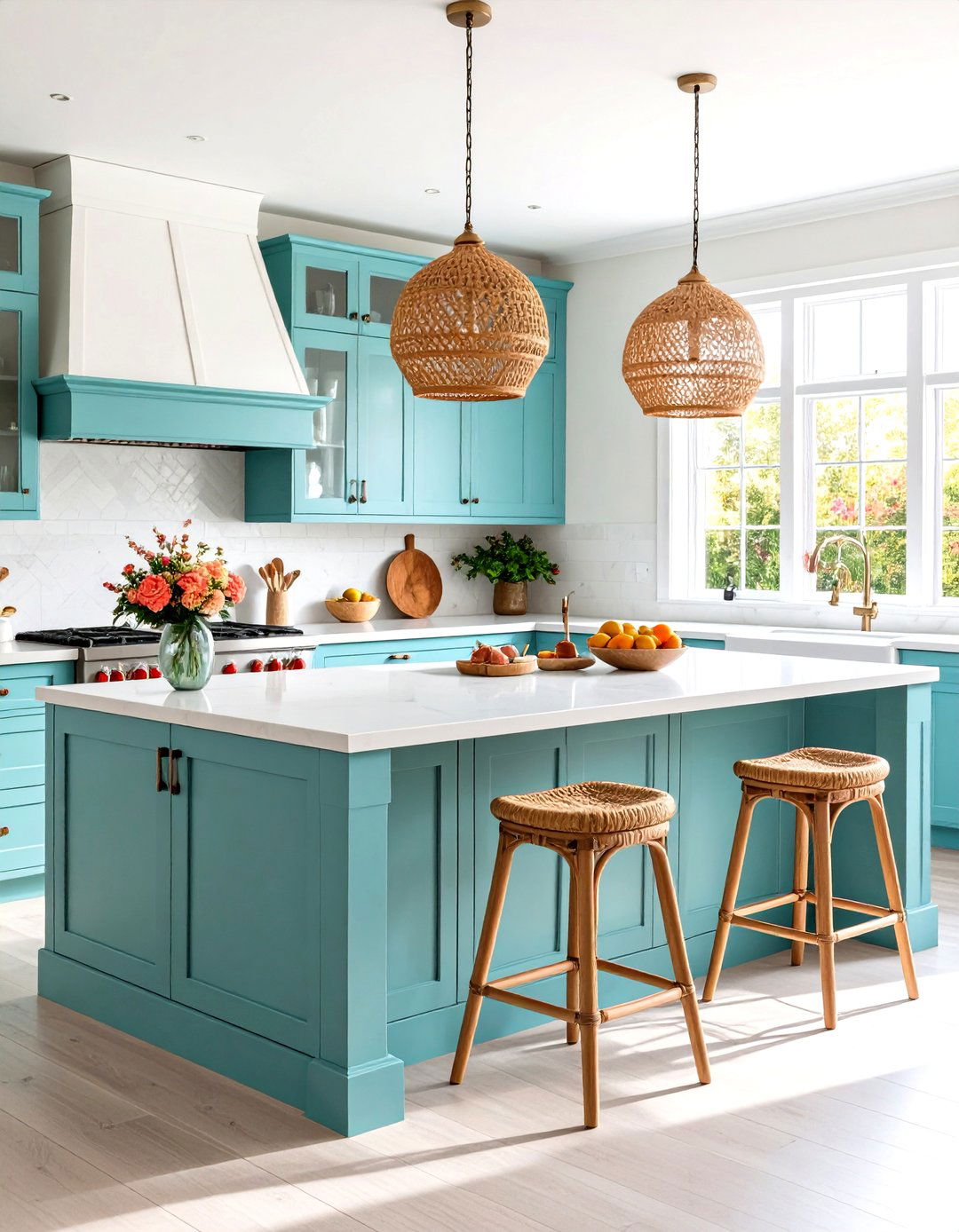

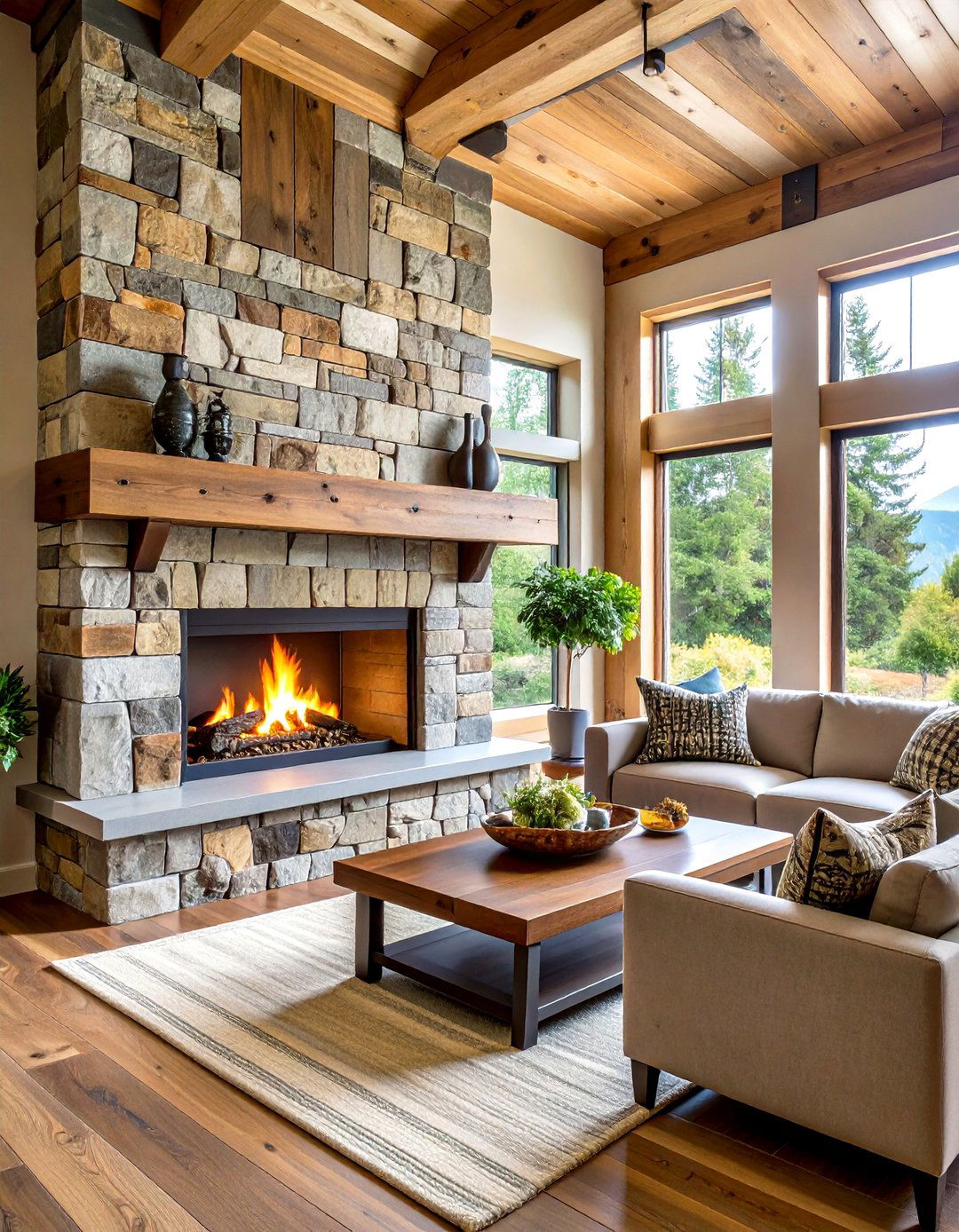
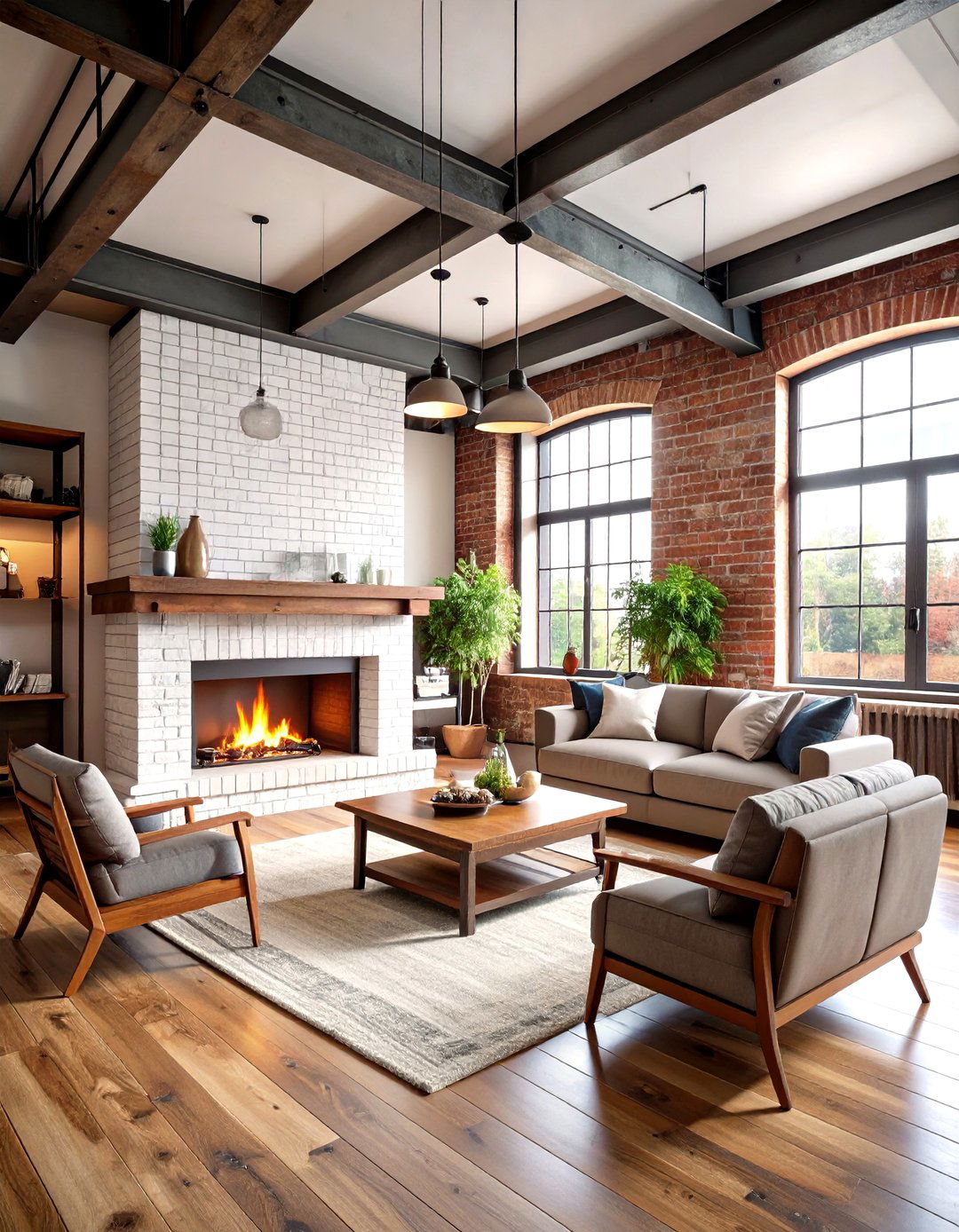
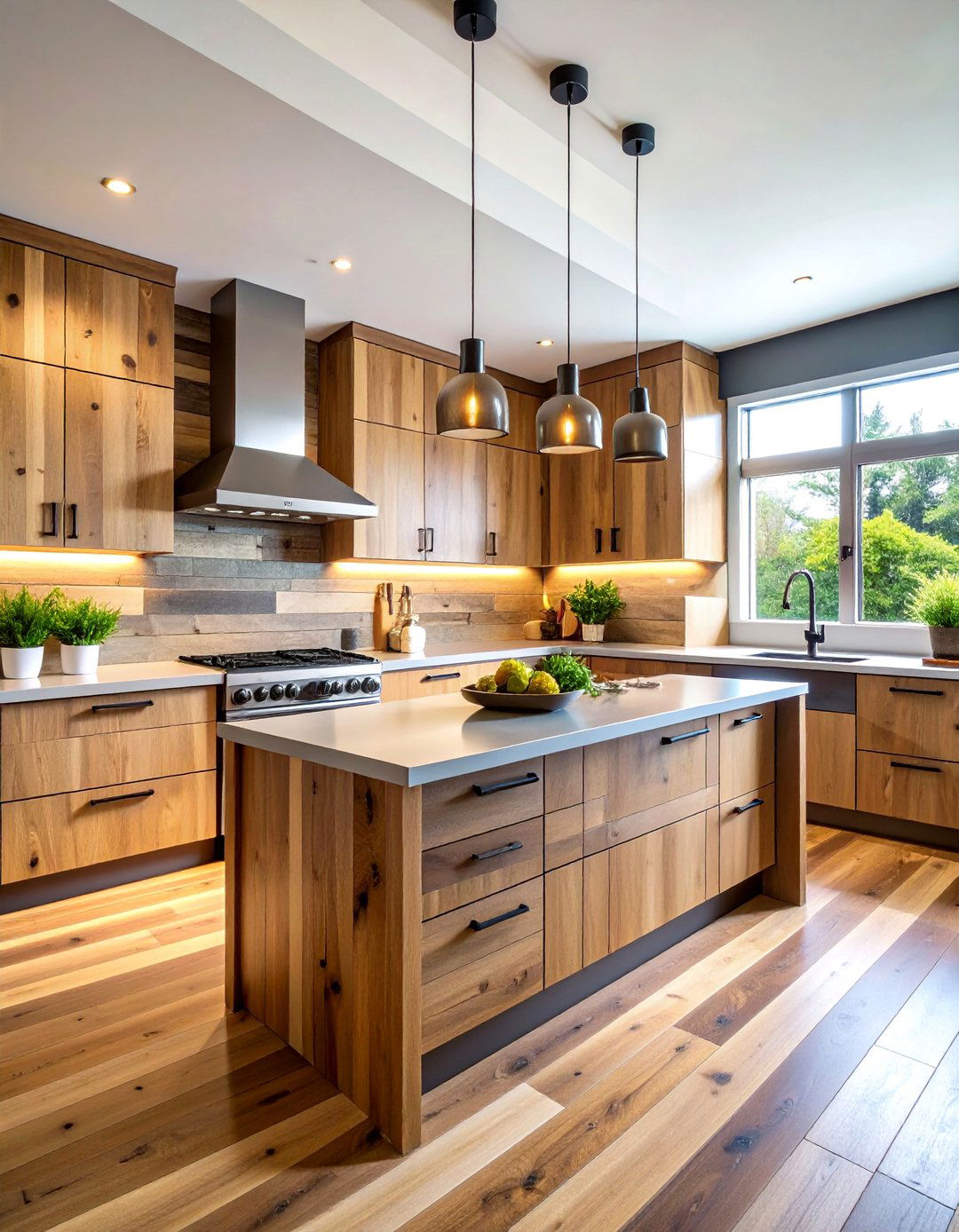
Leave a Reply